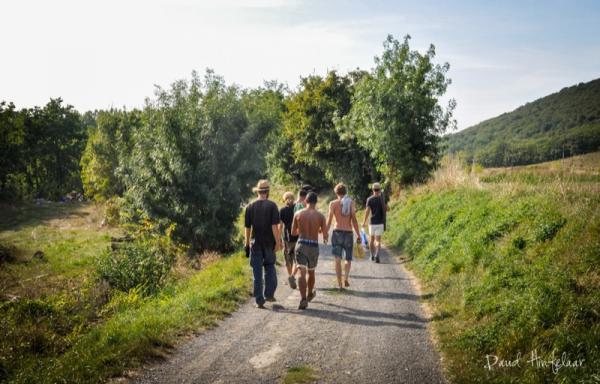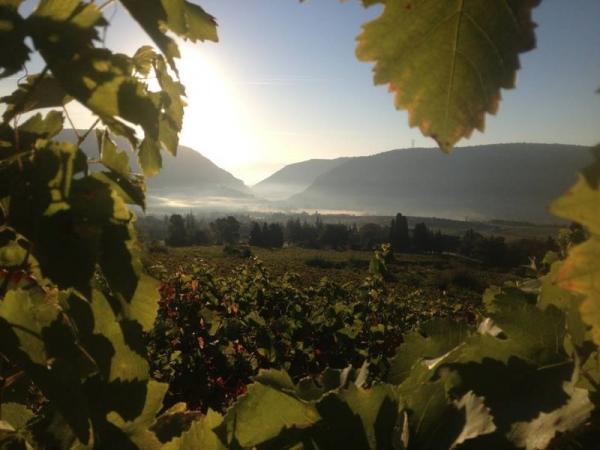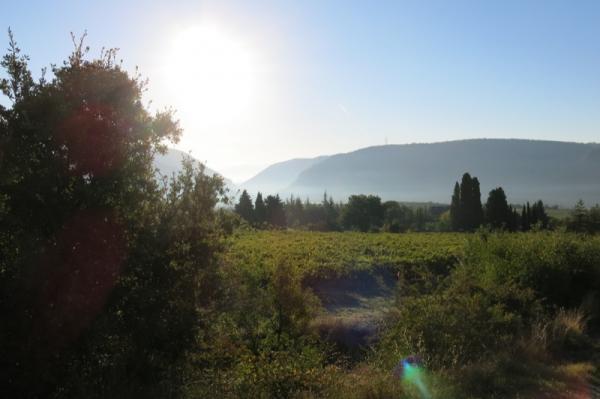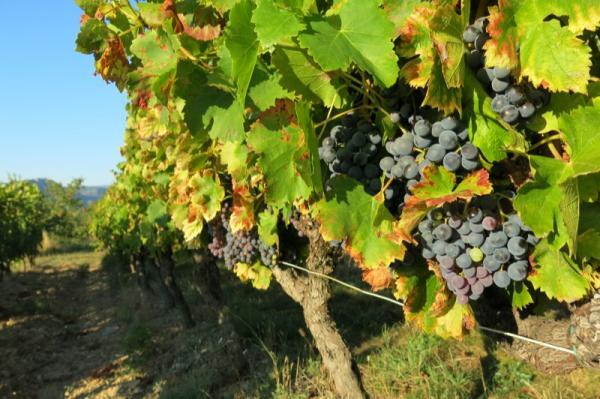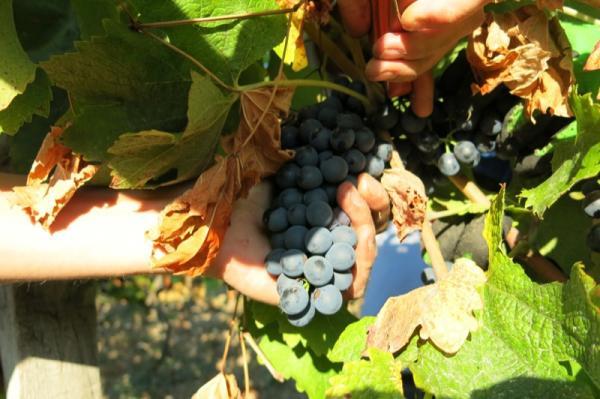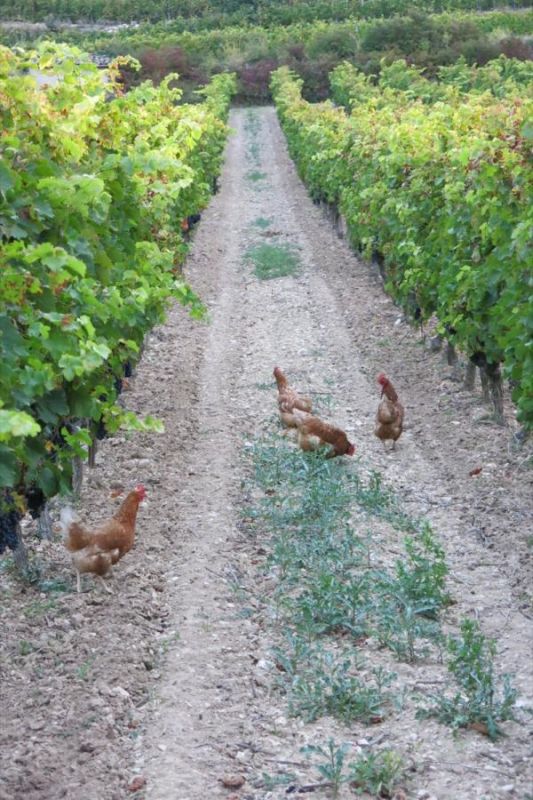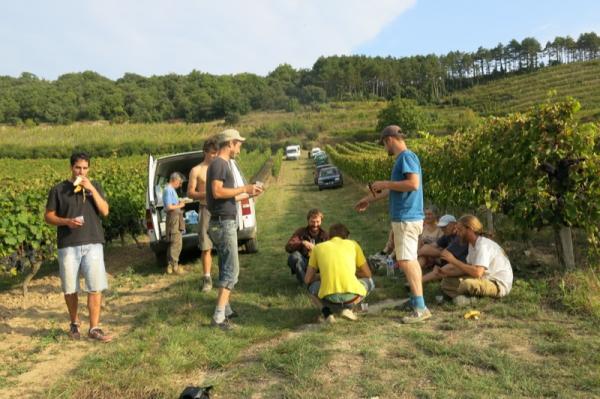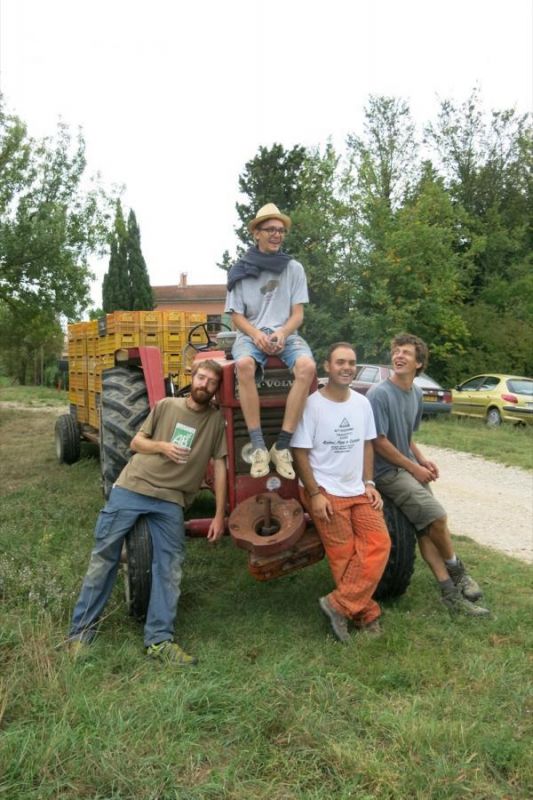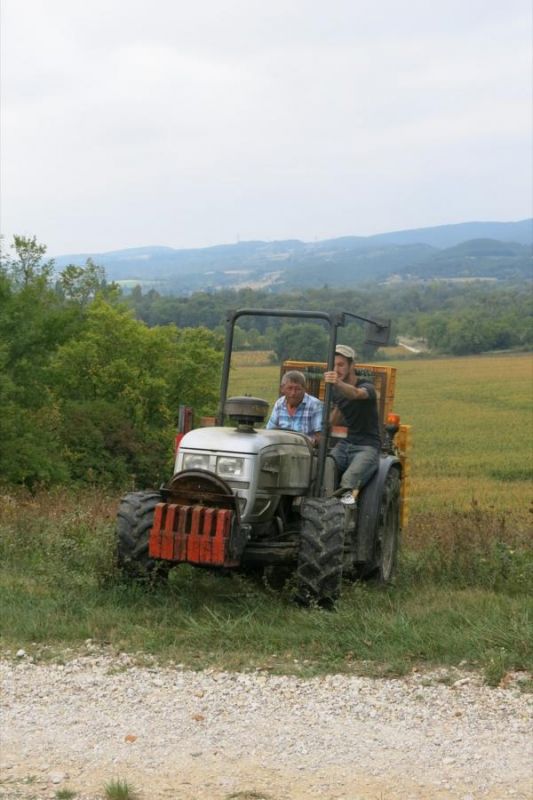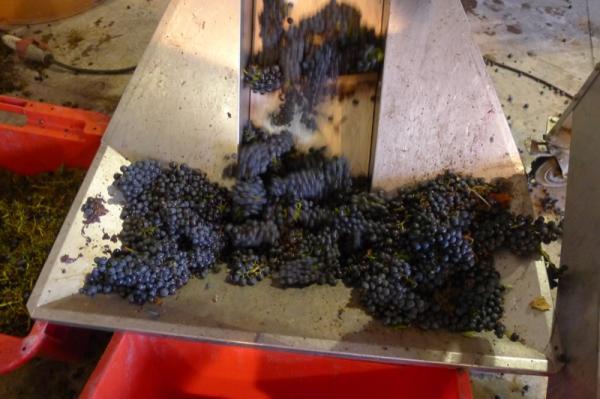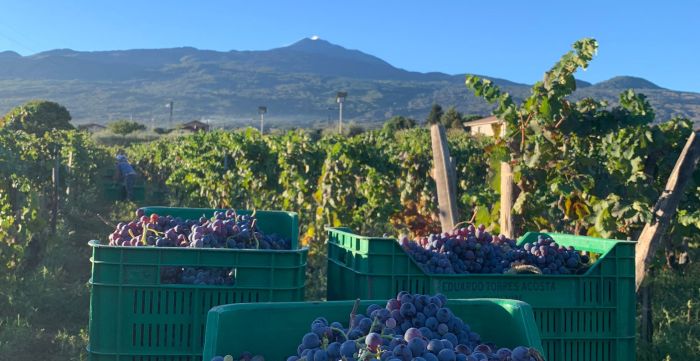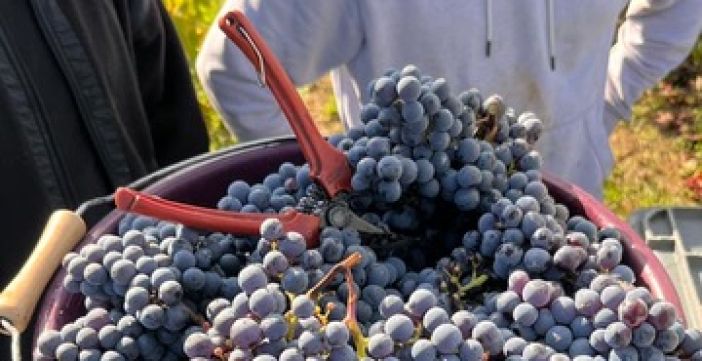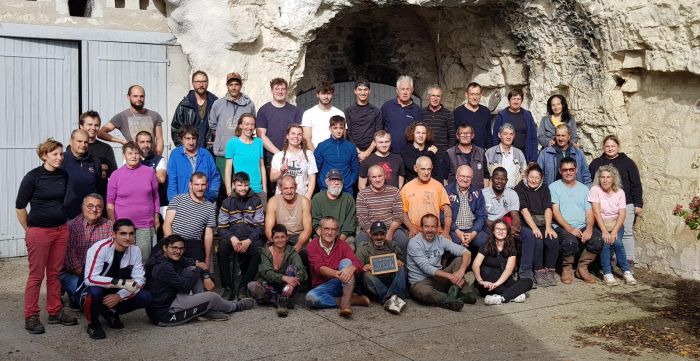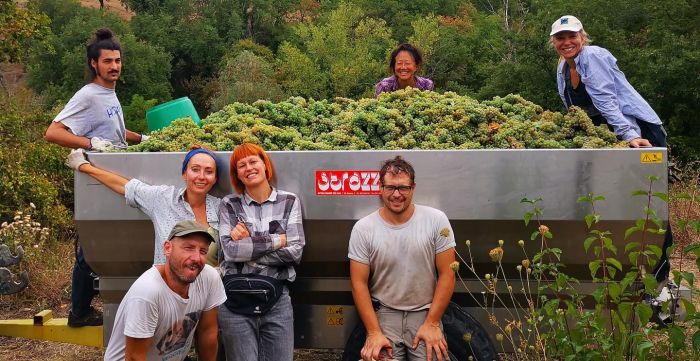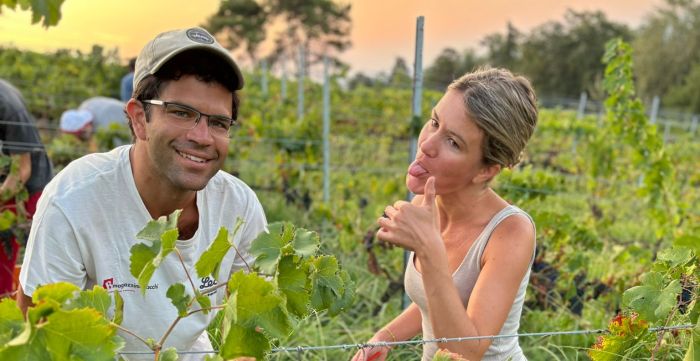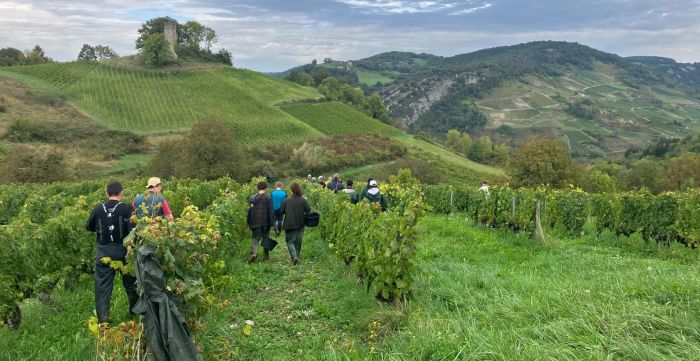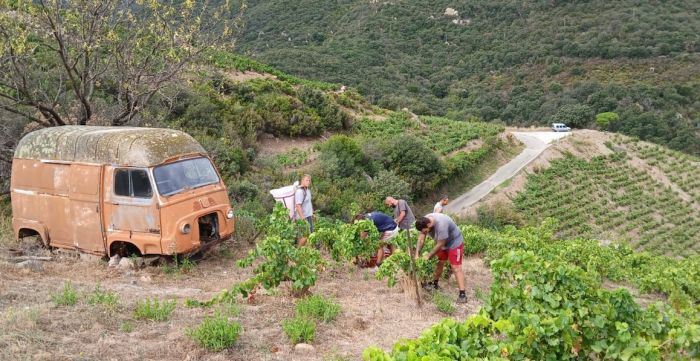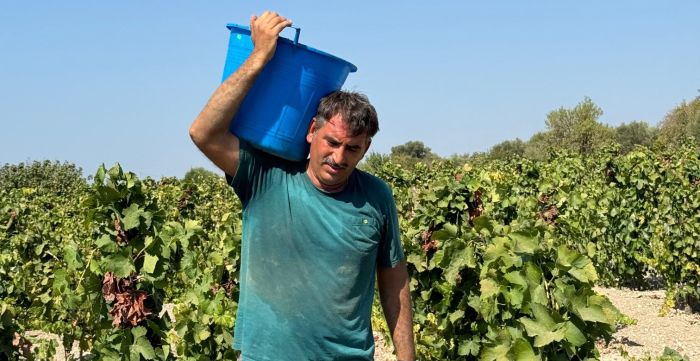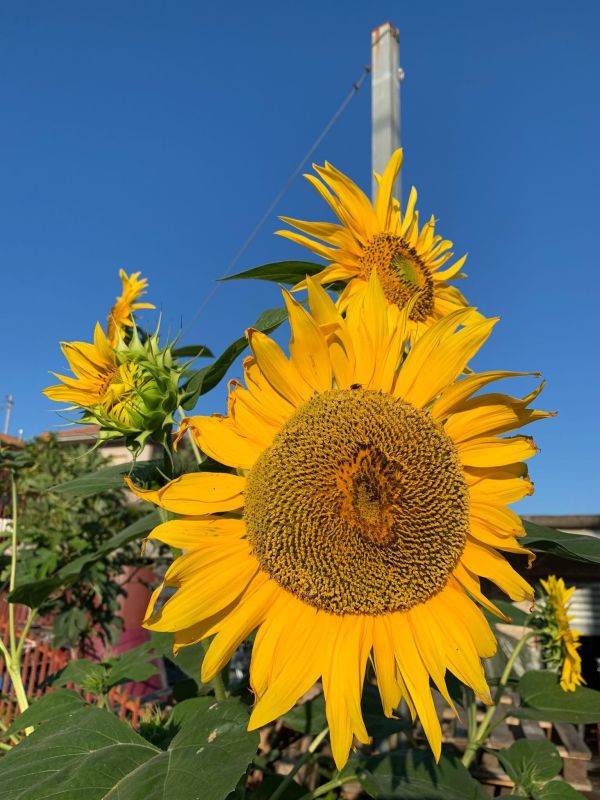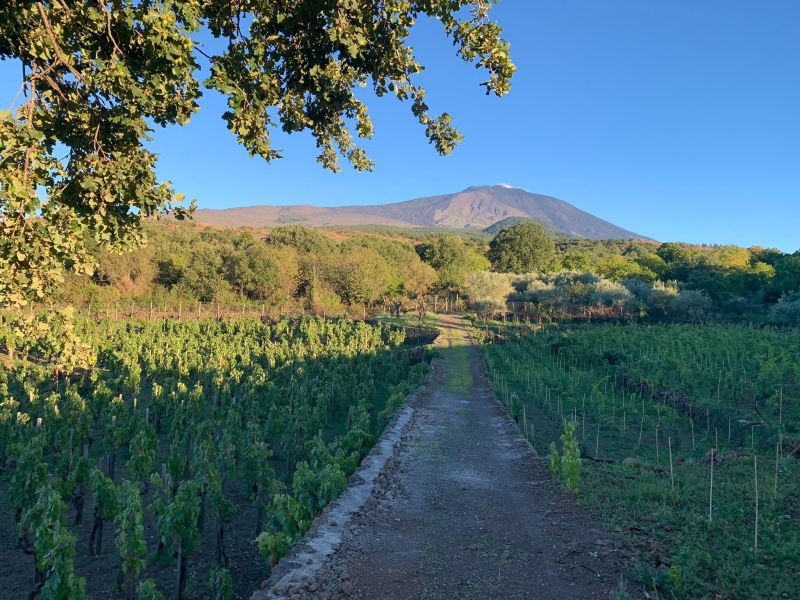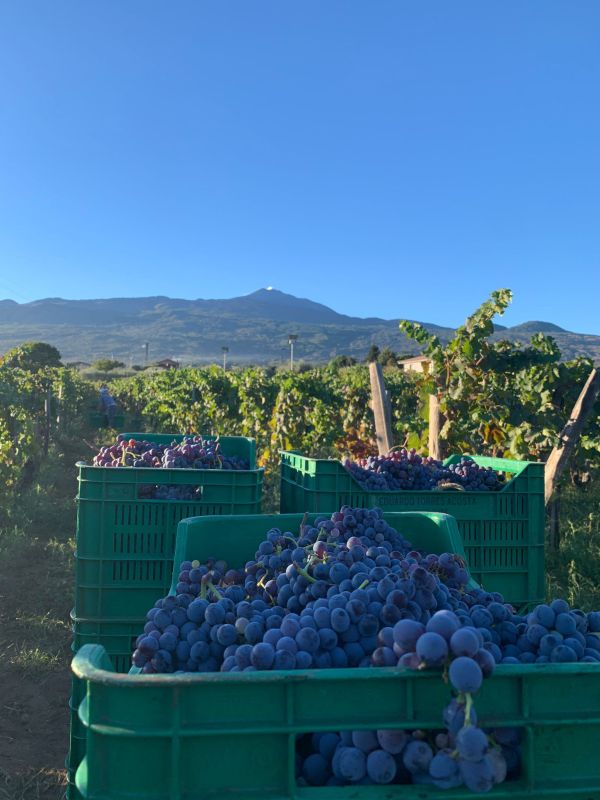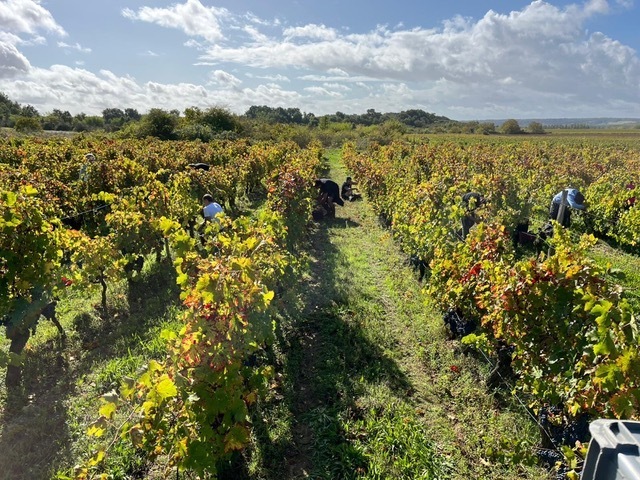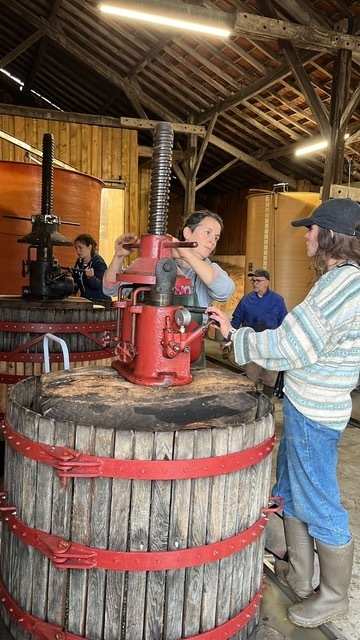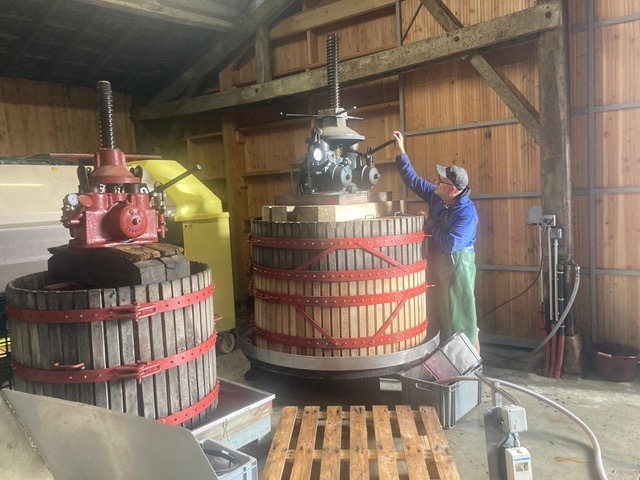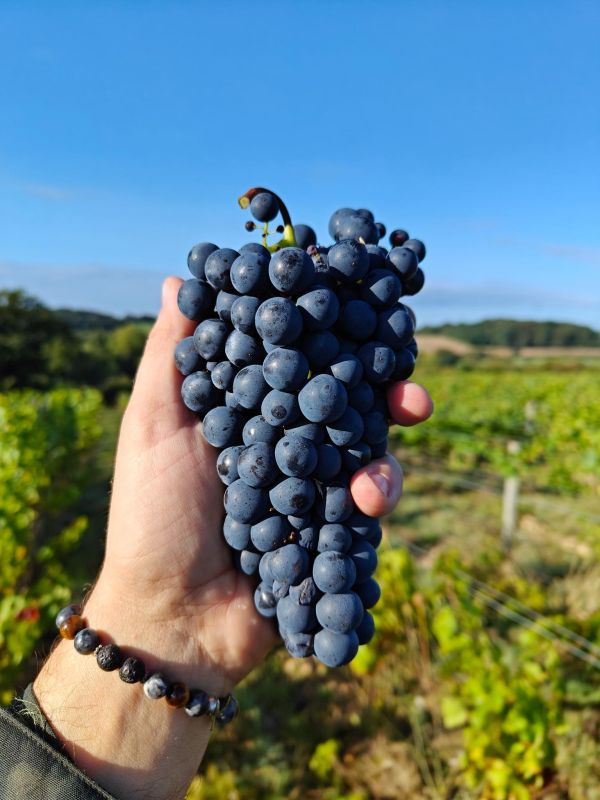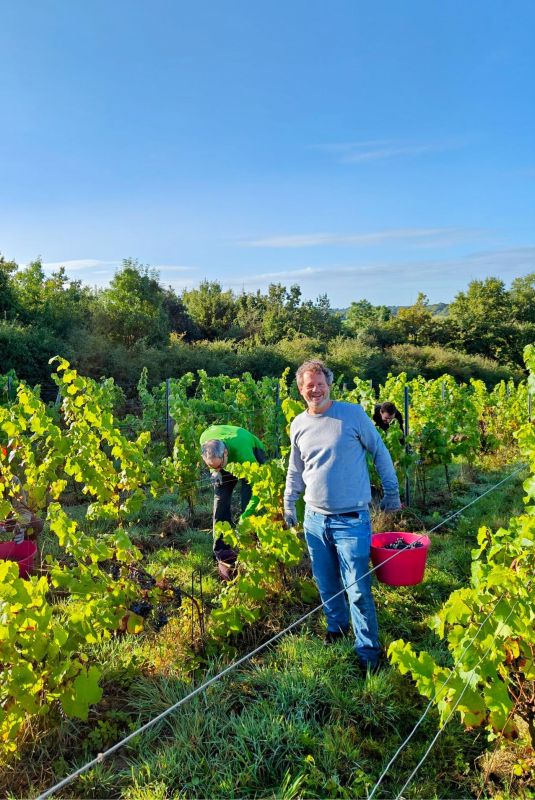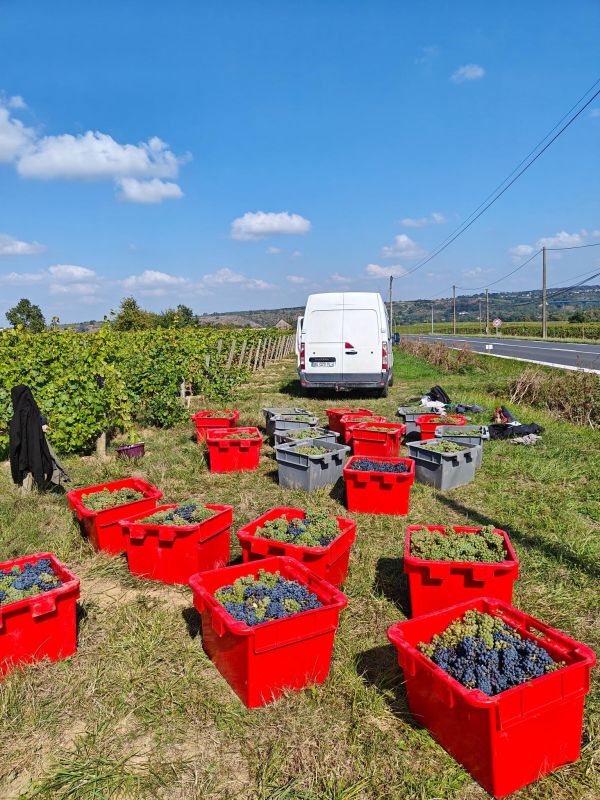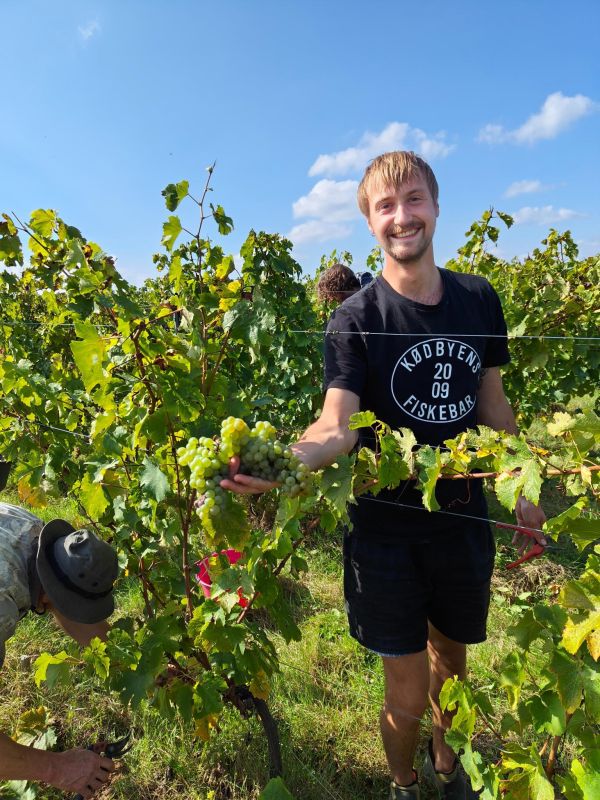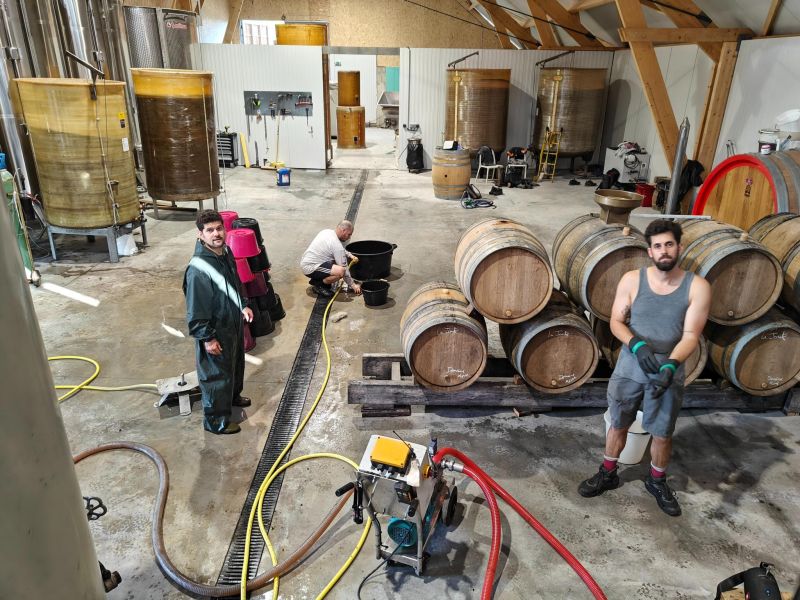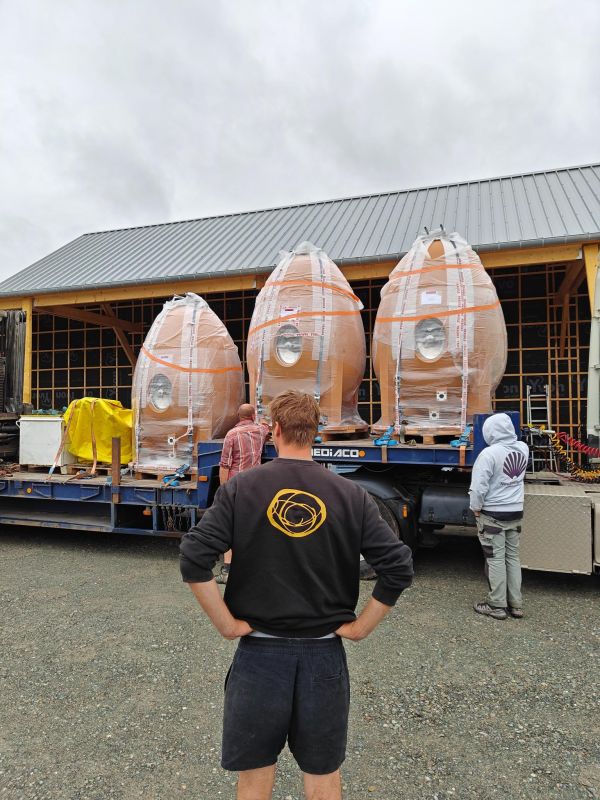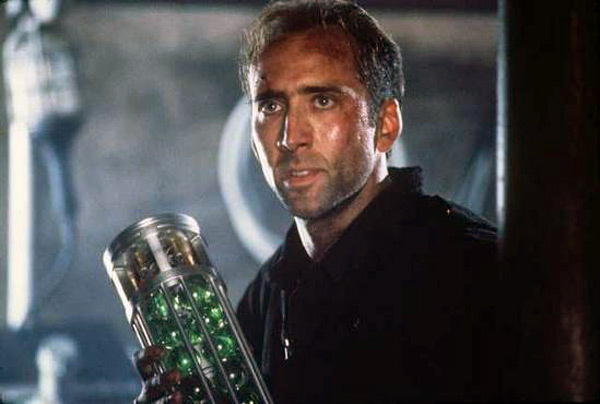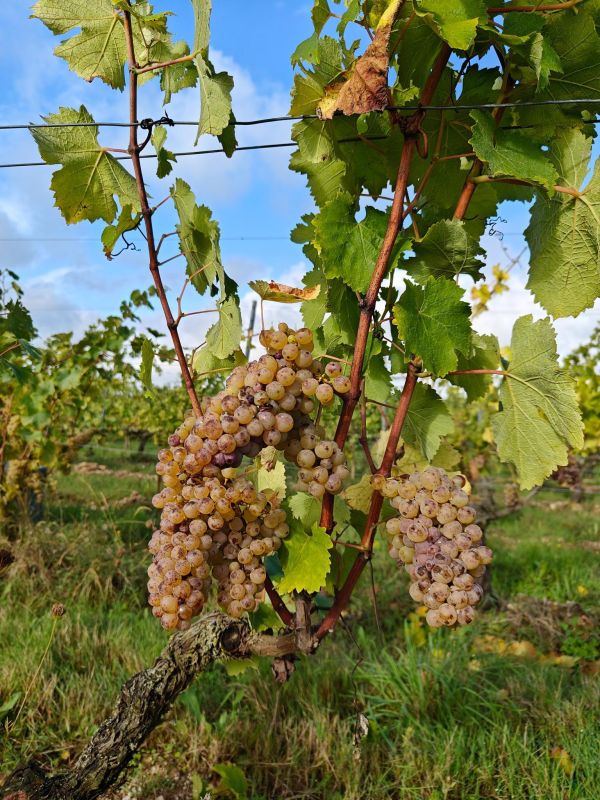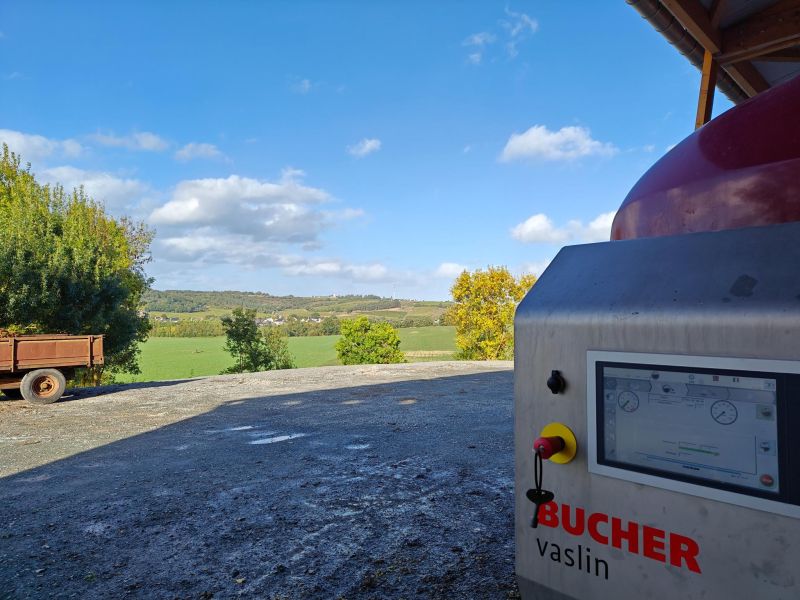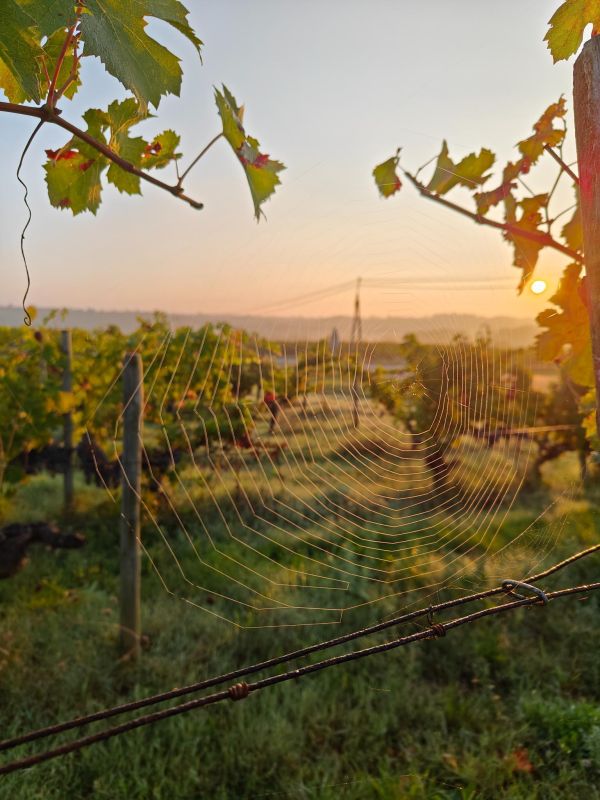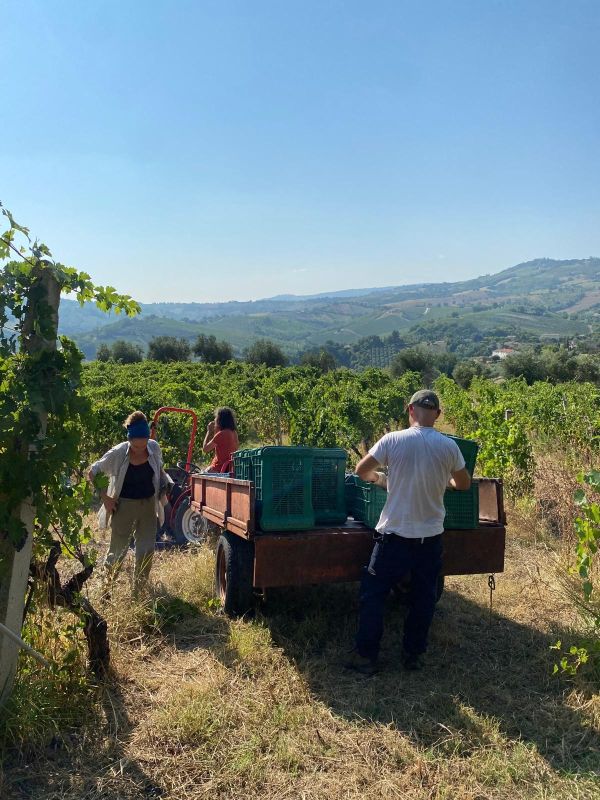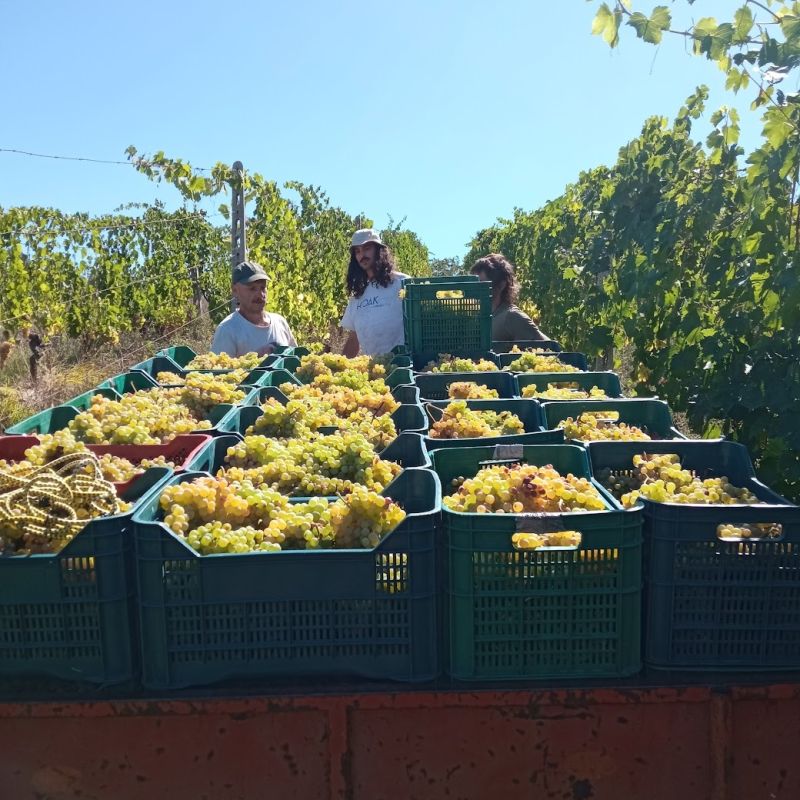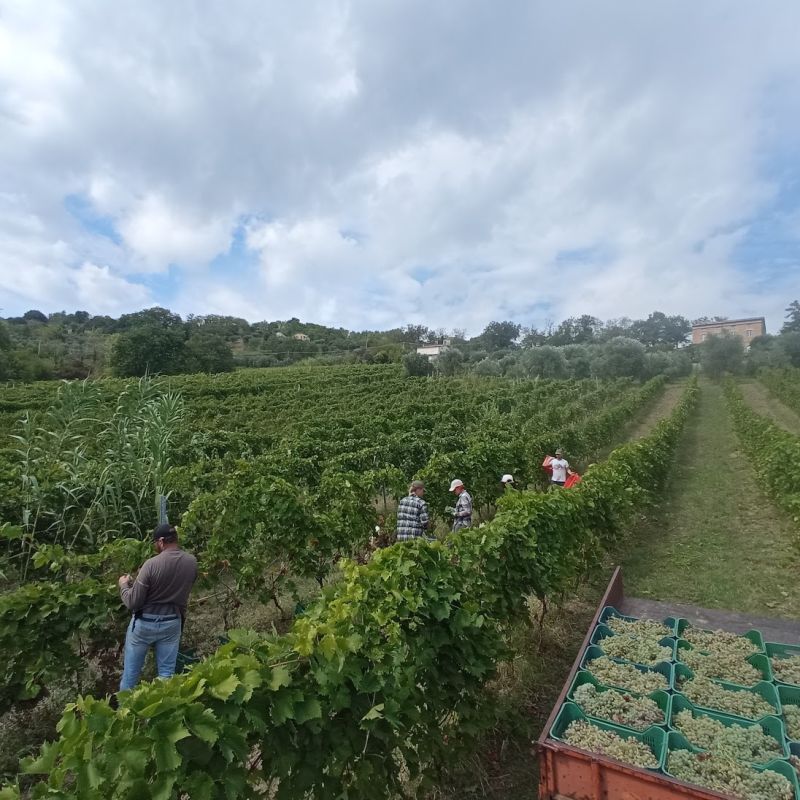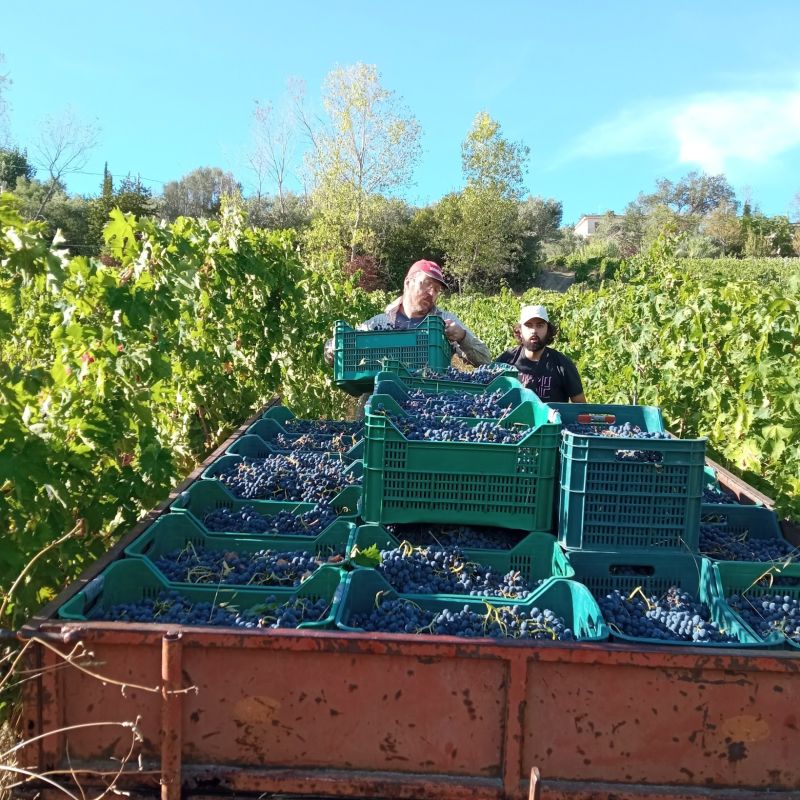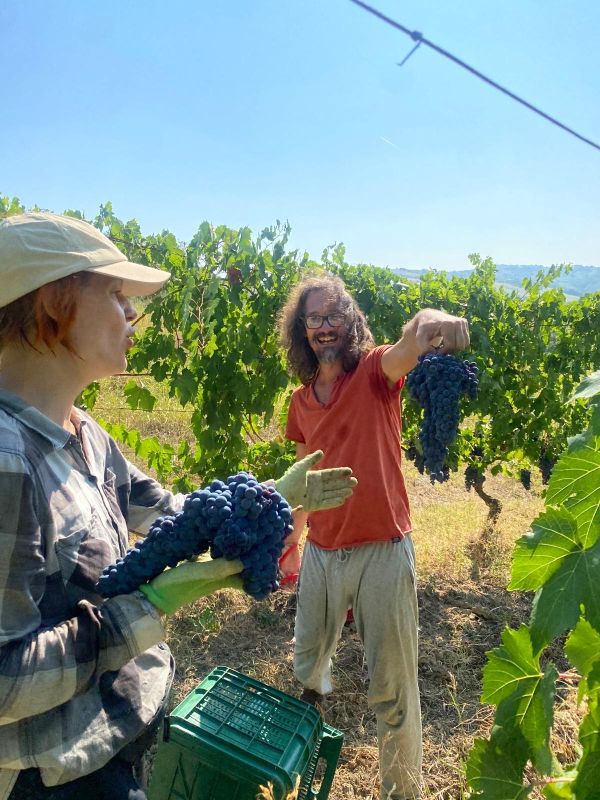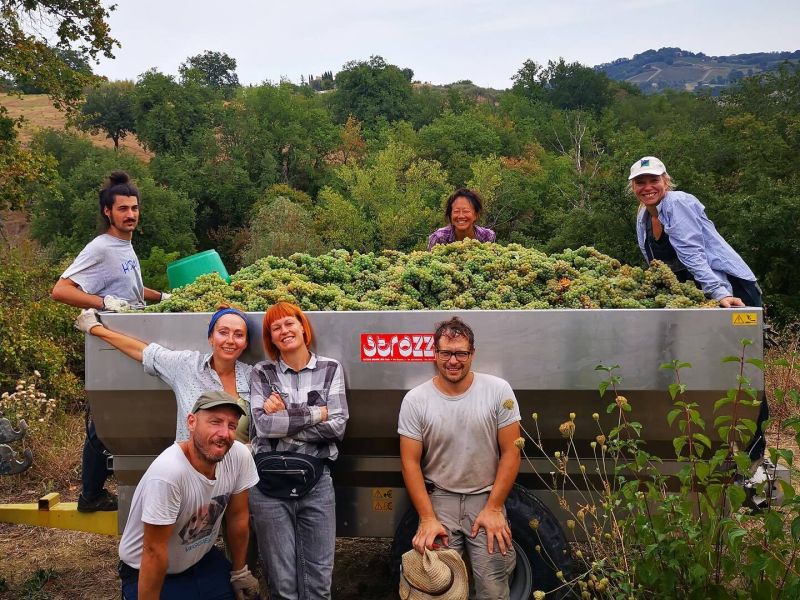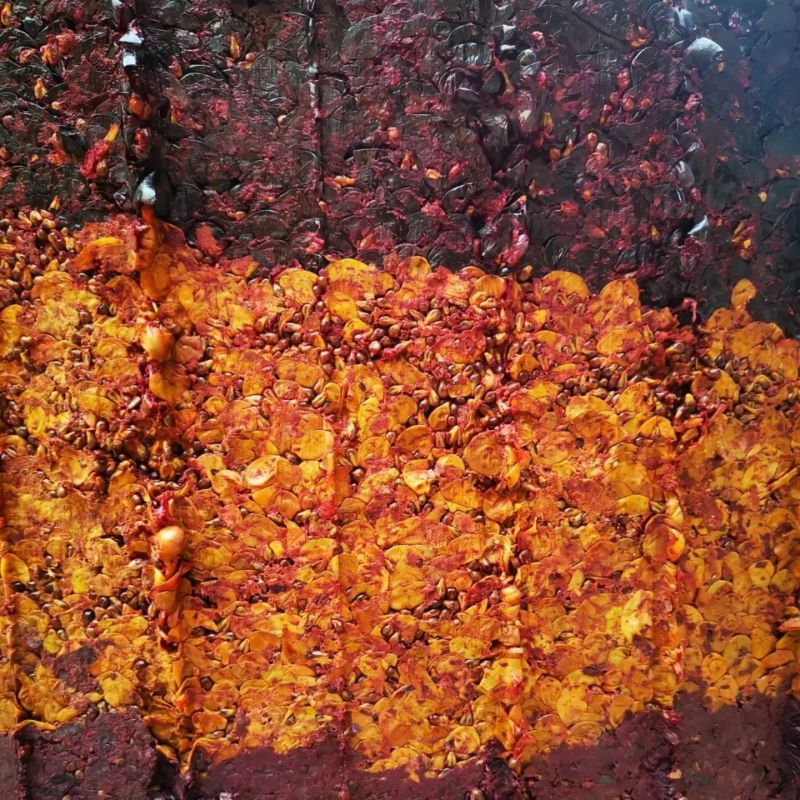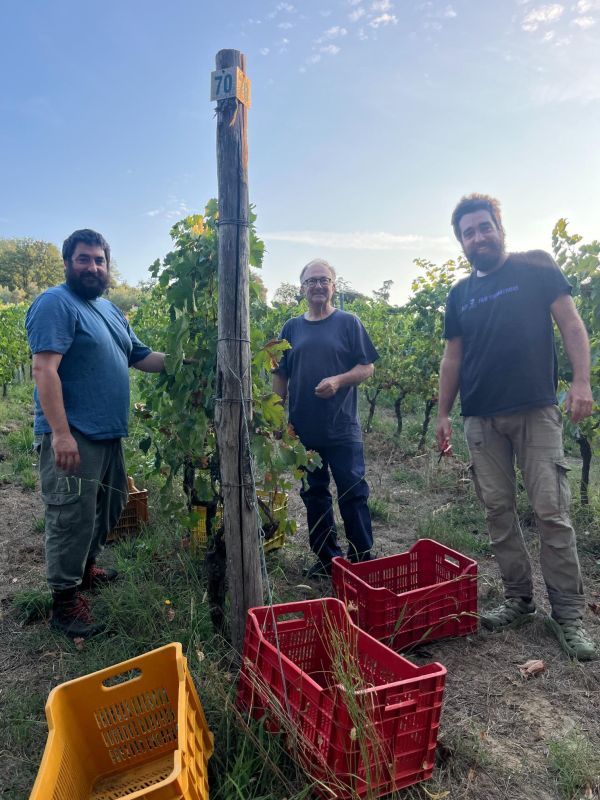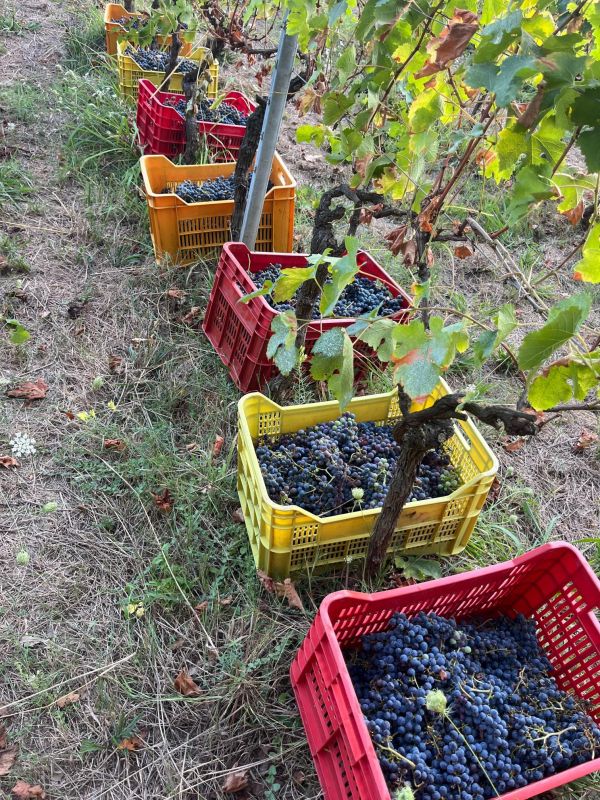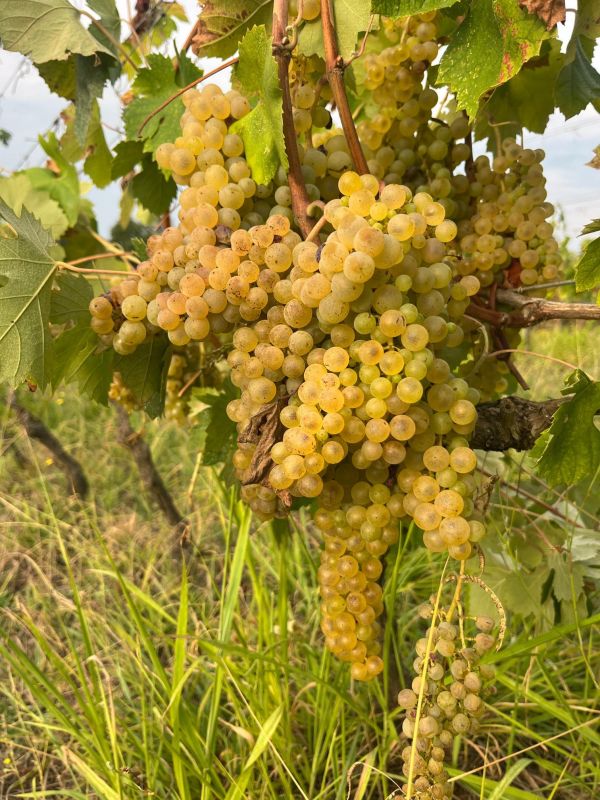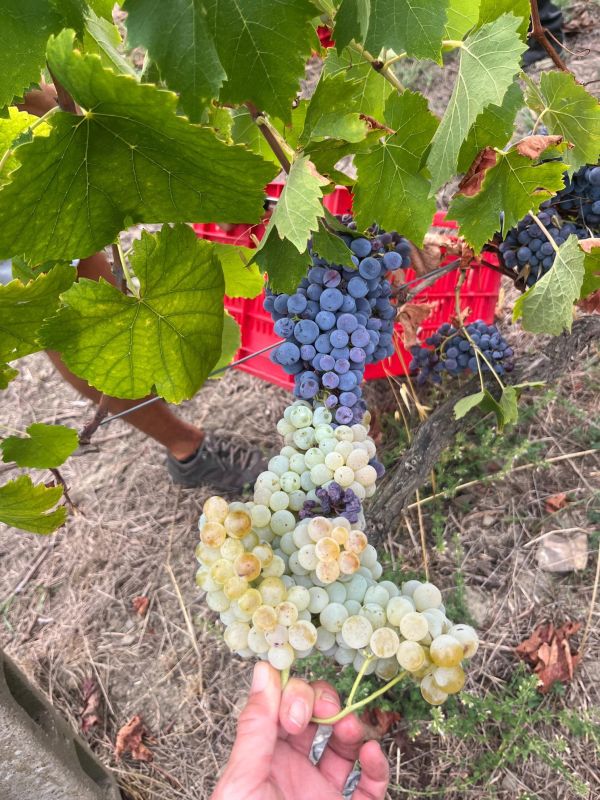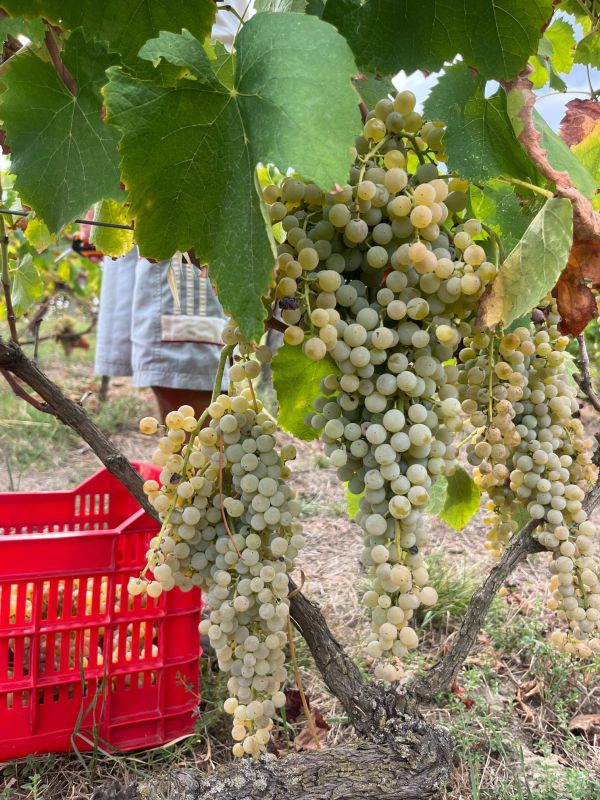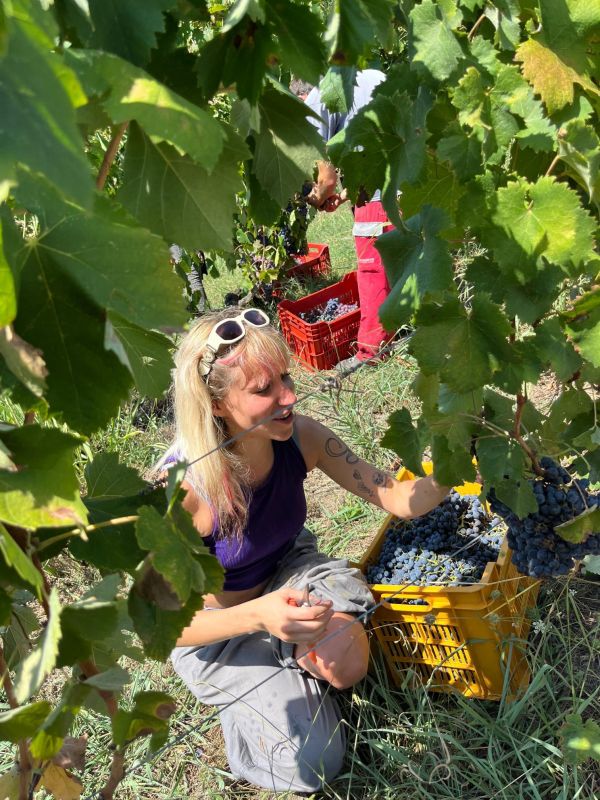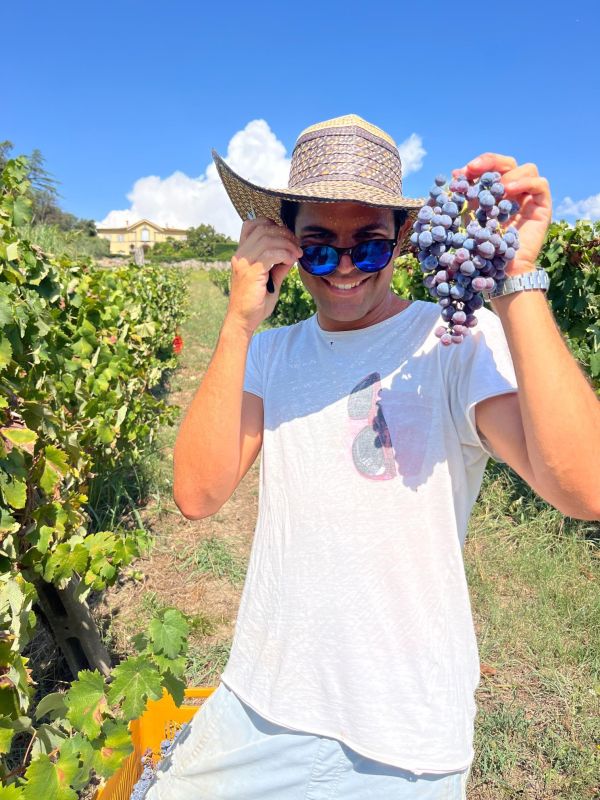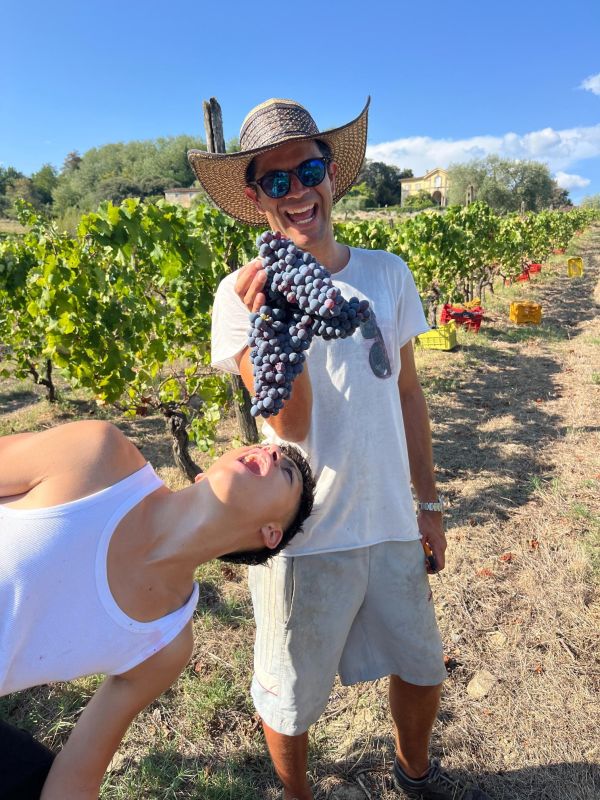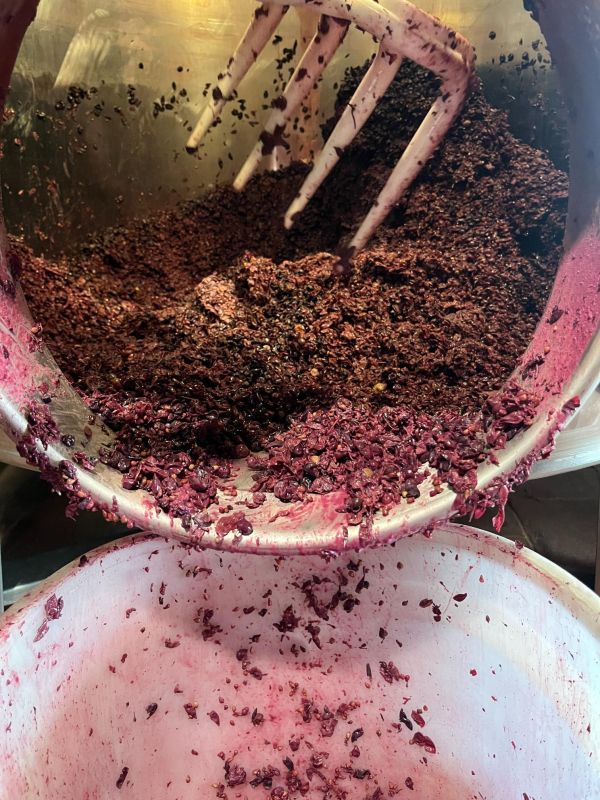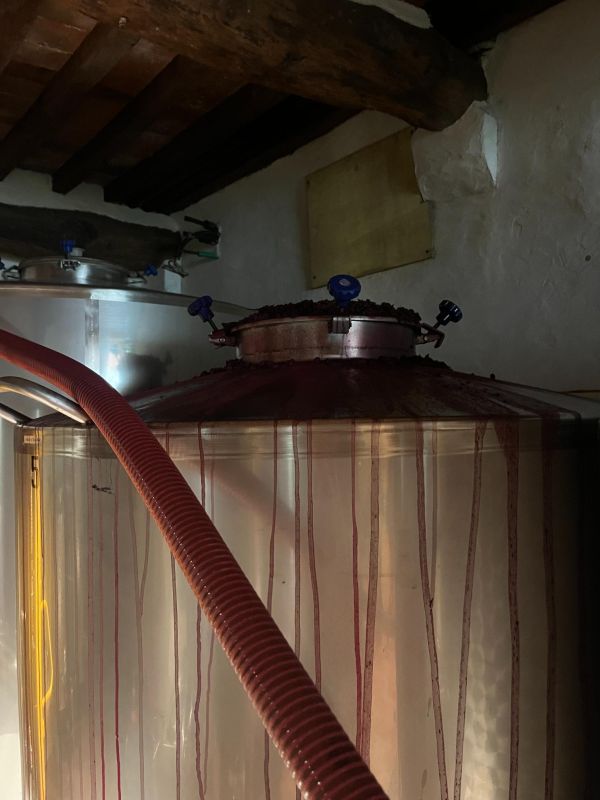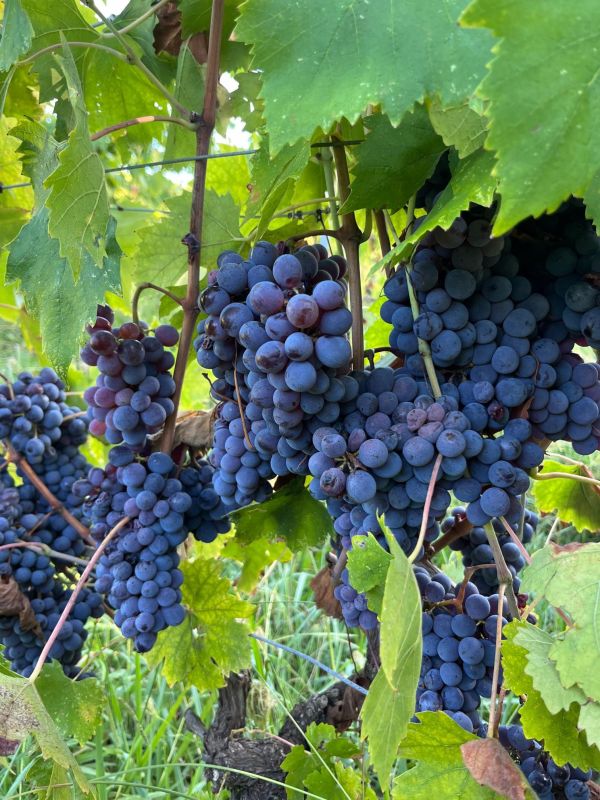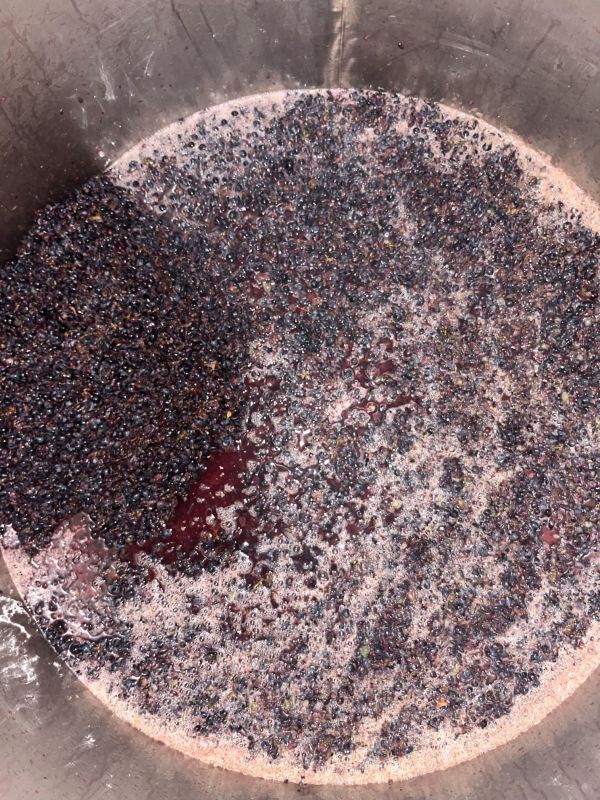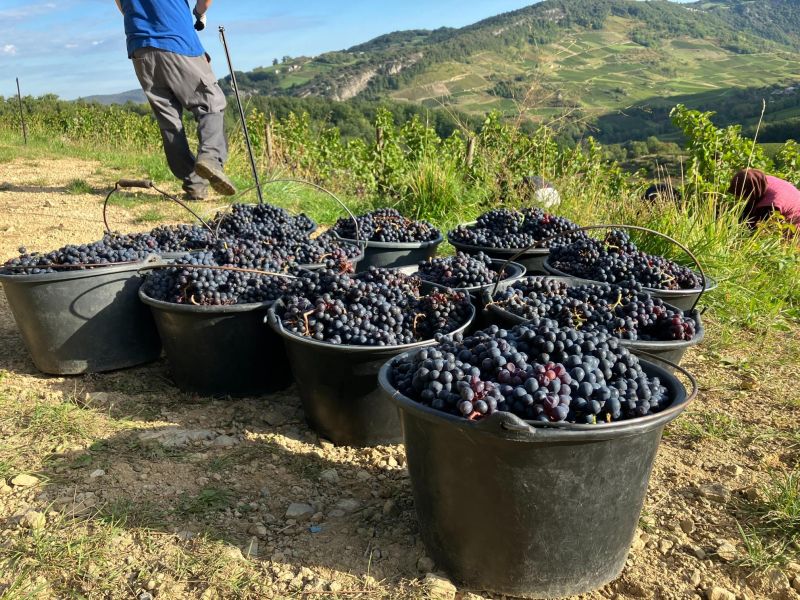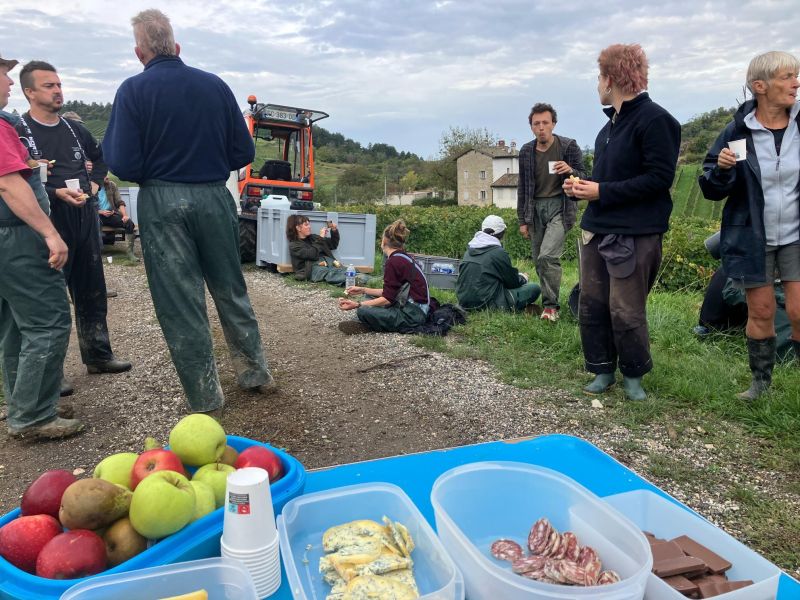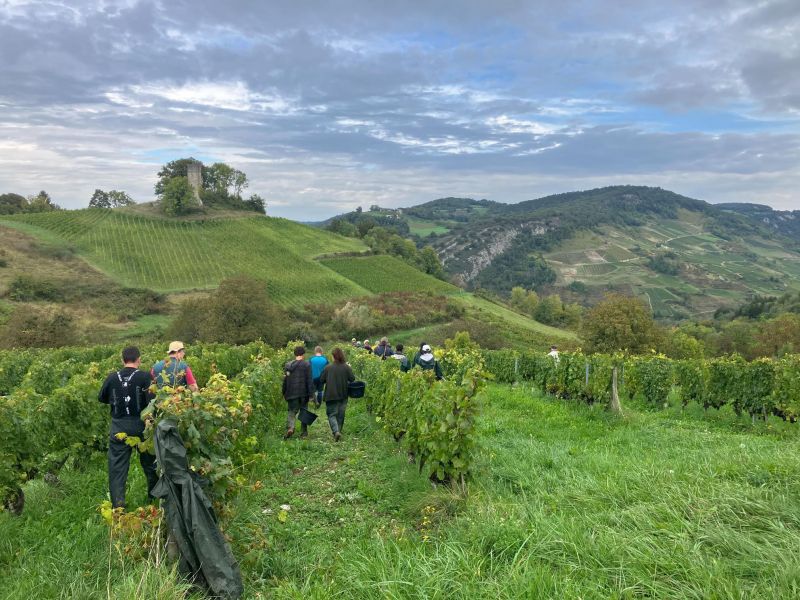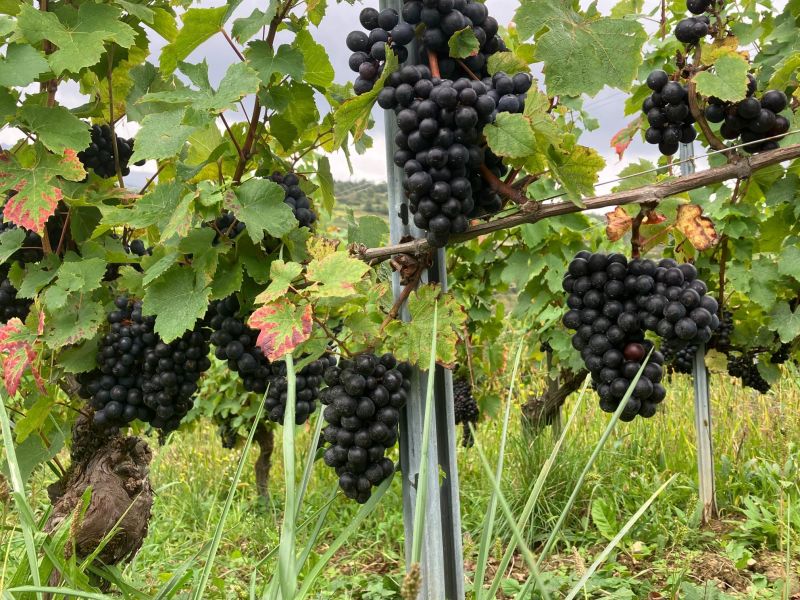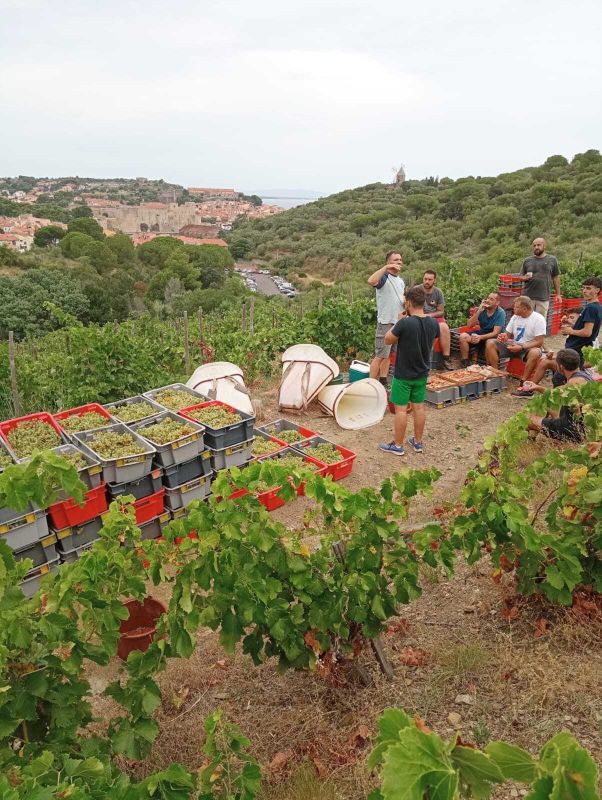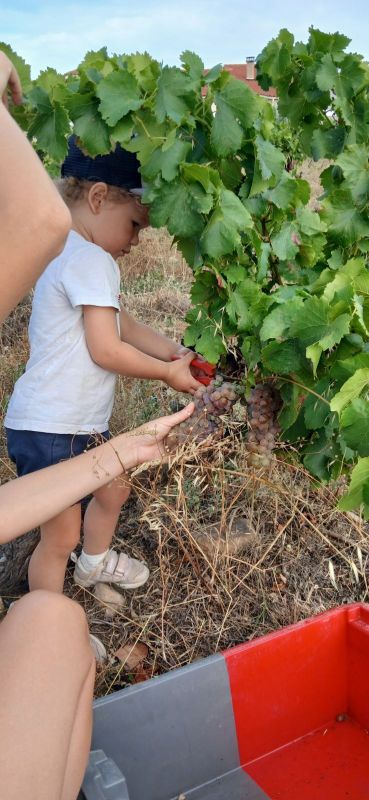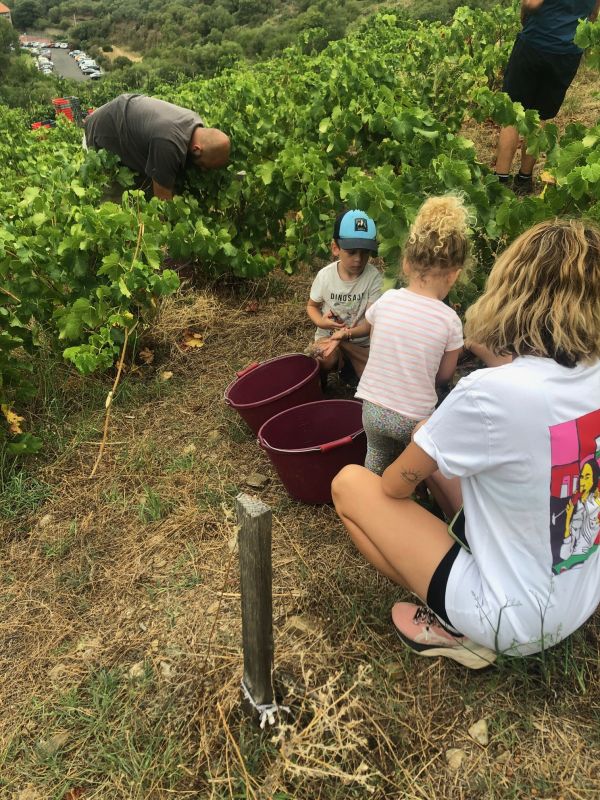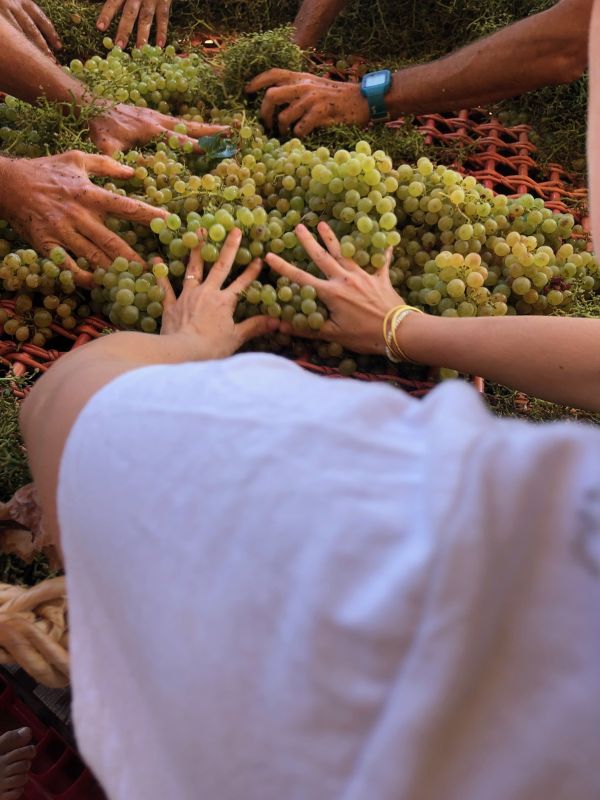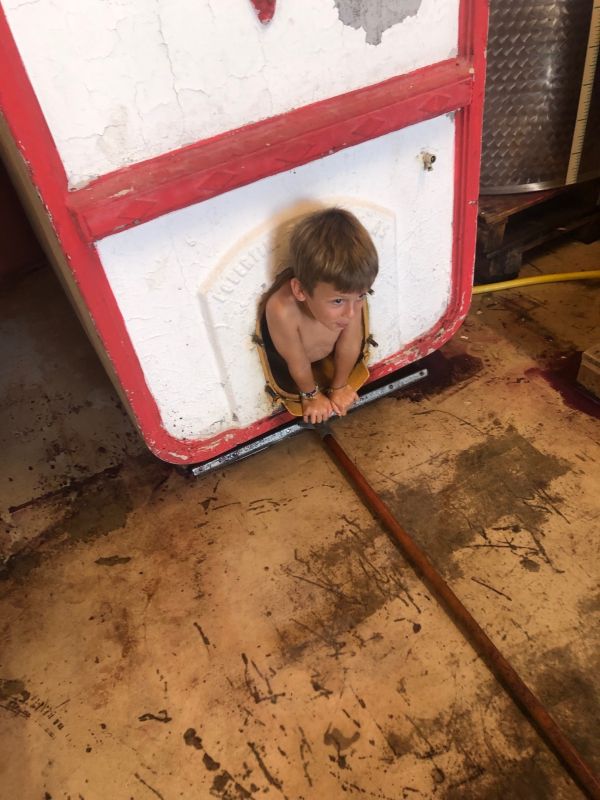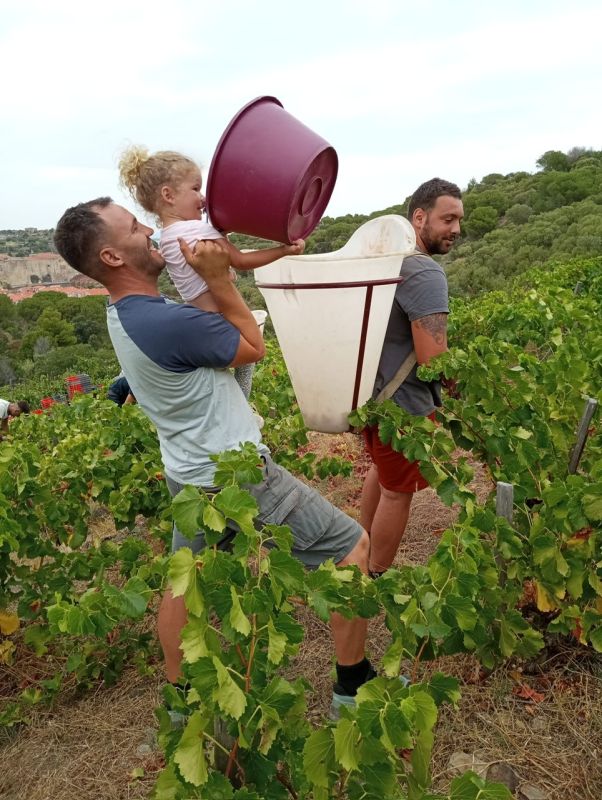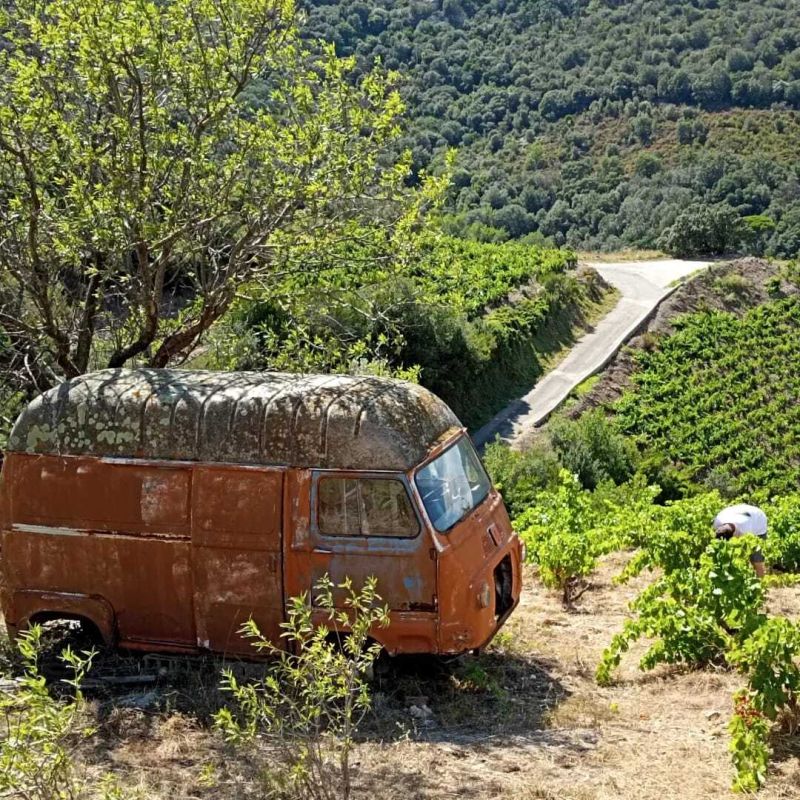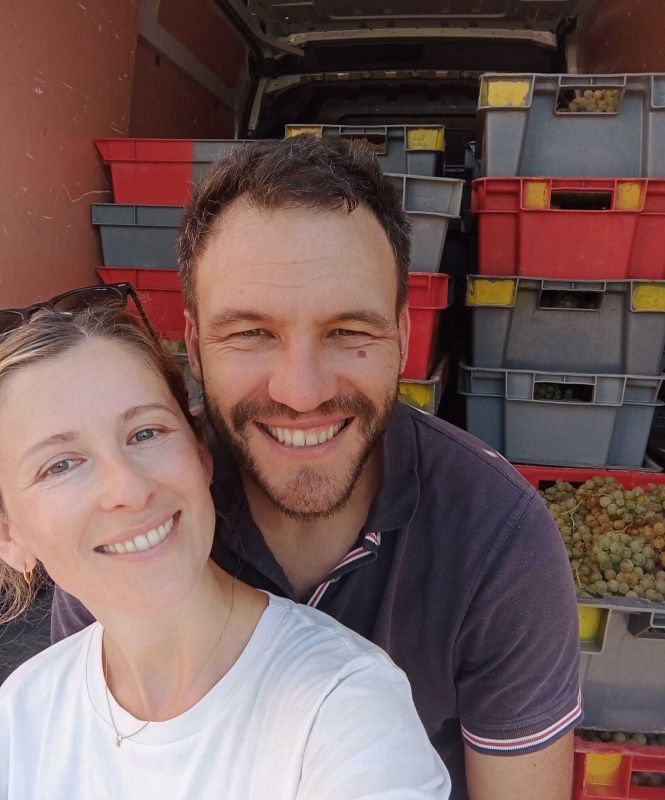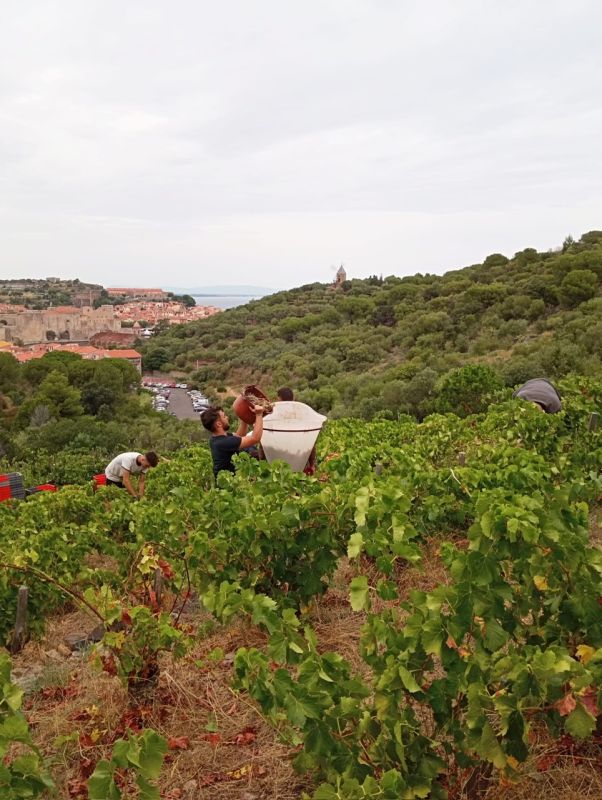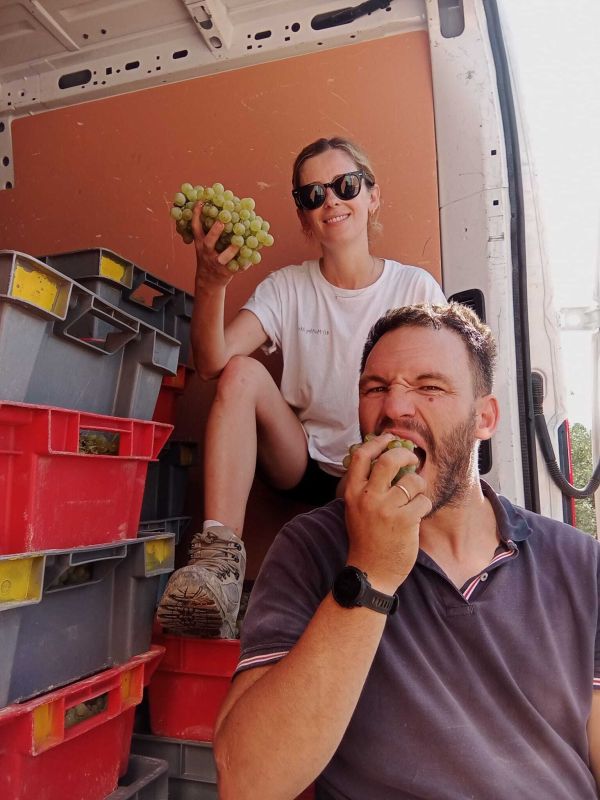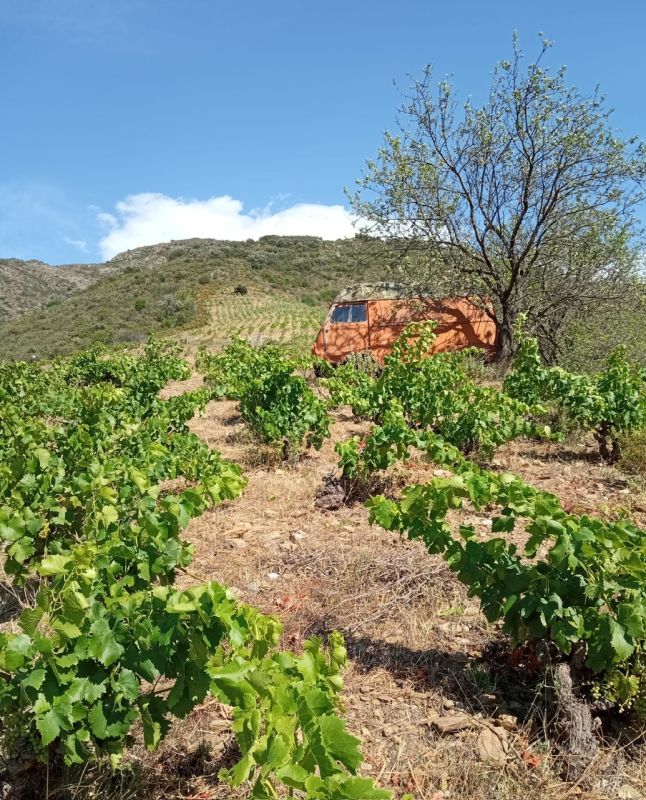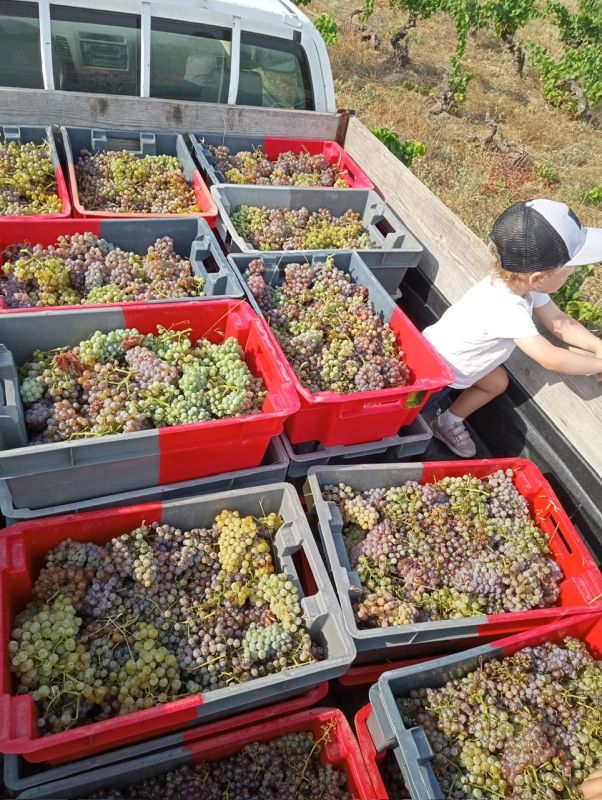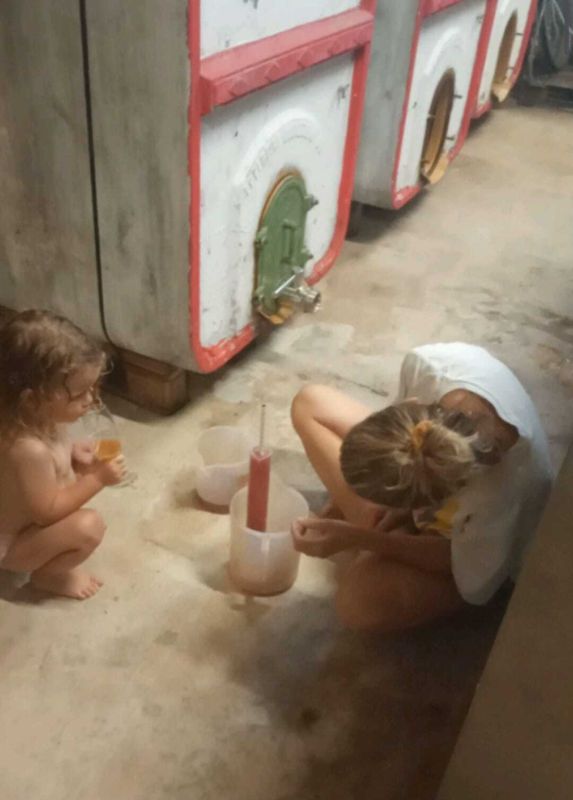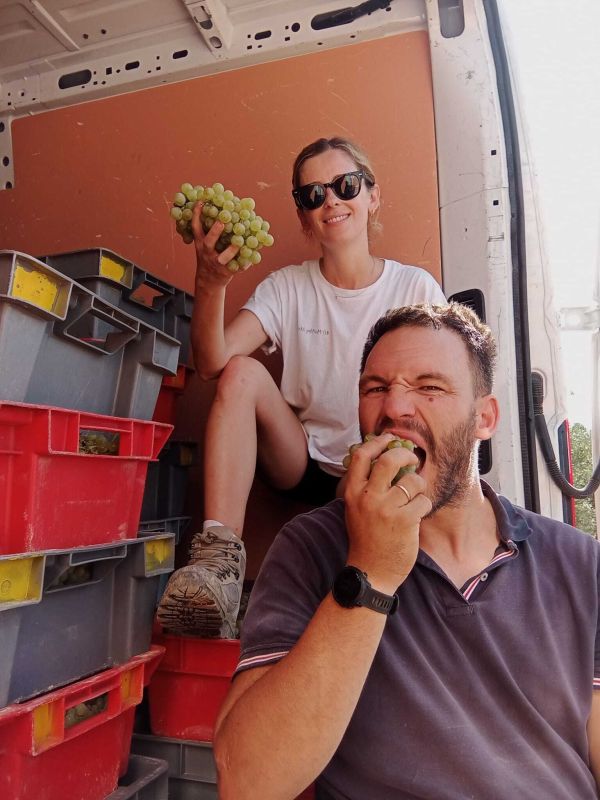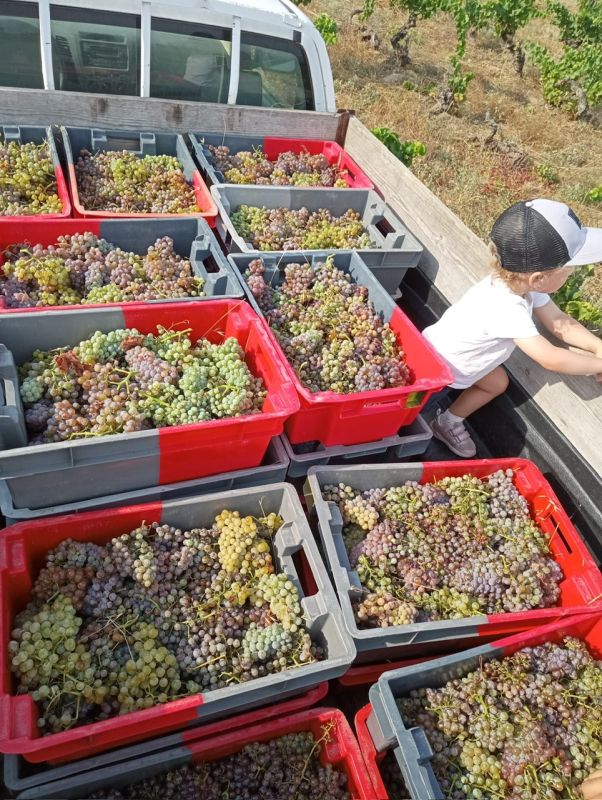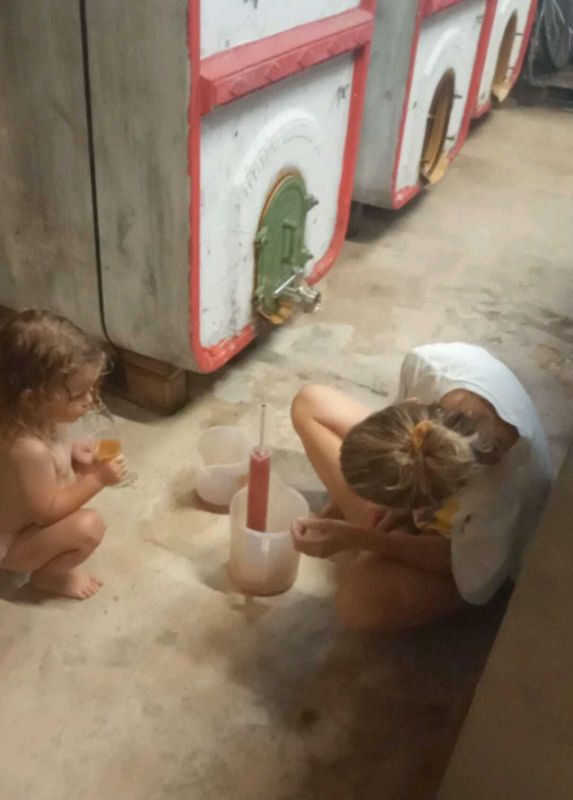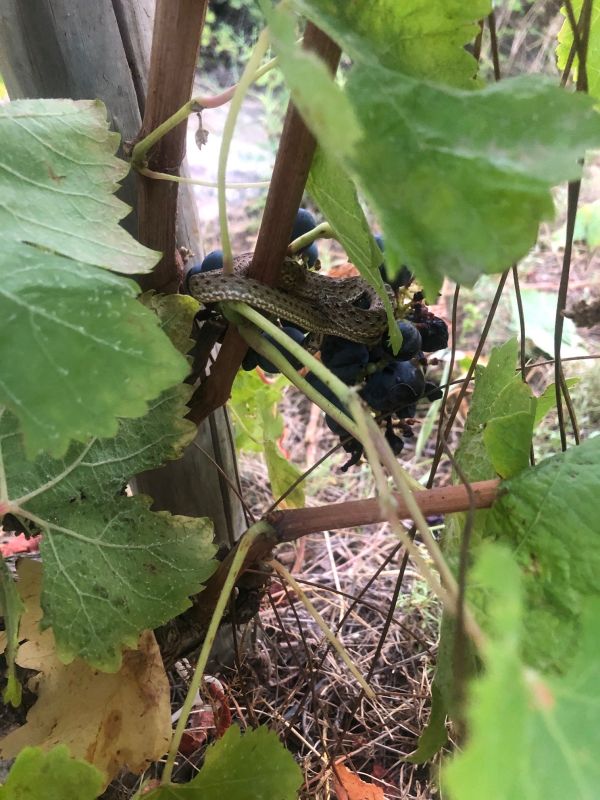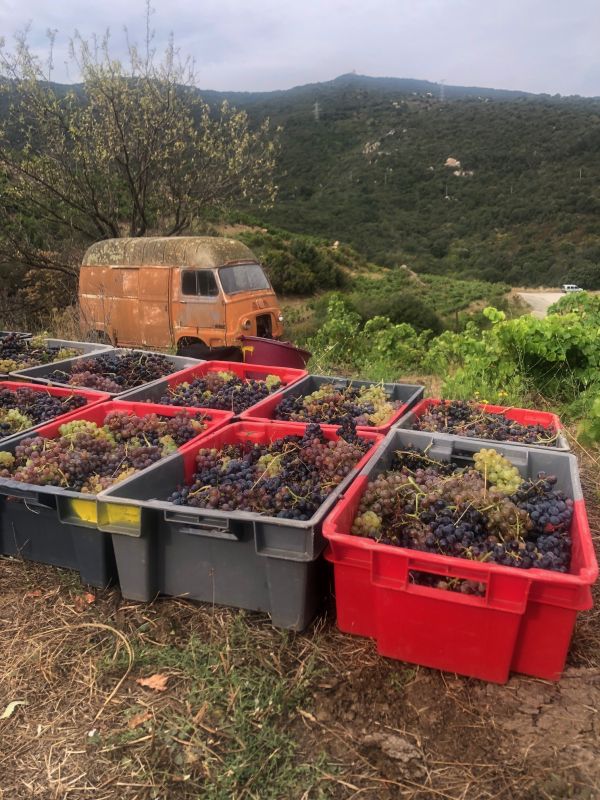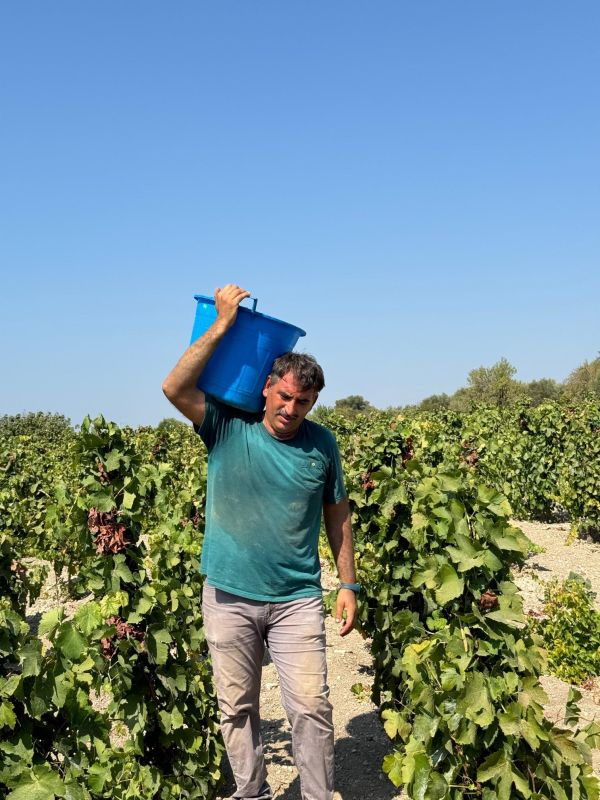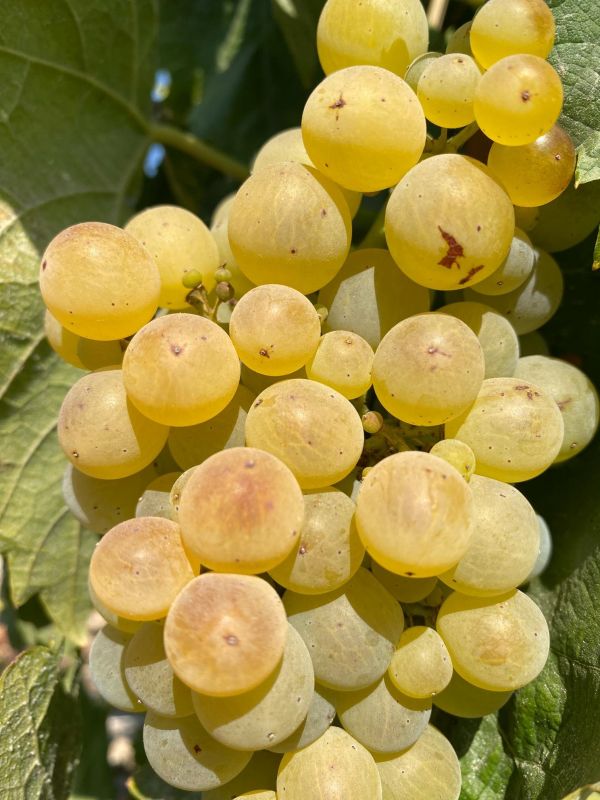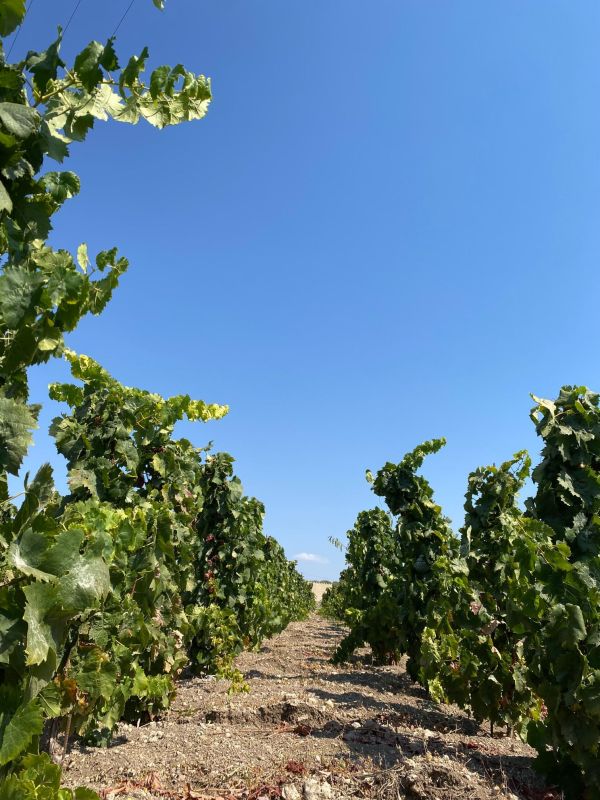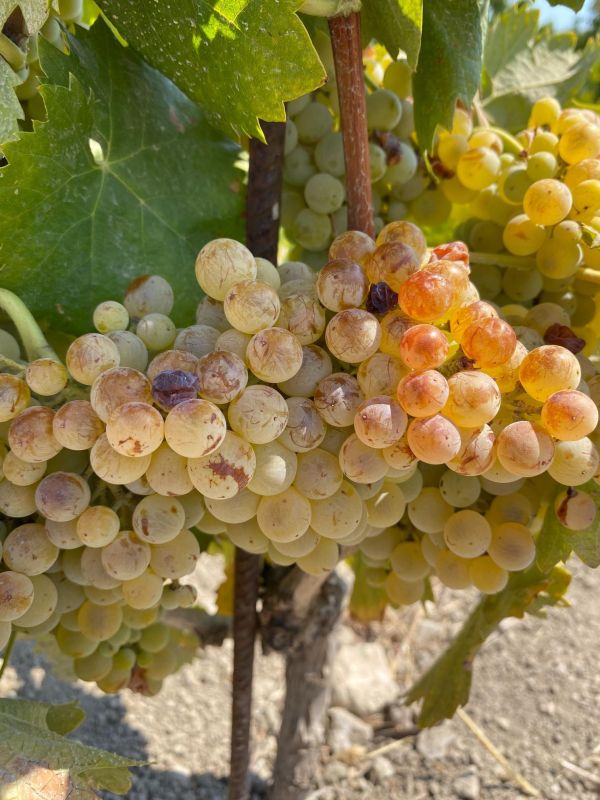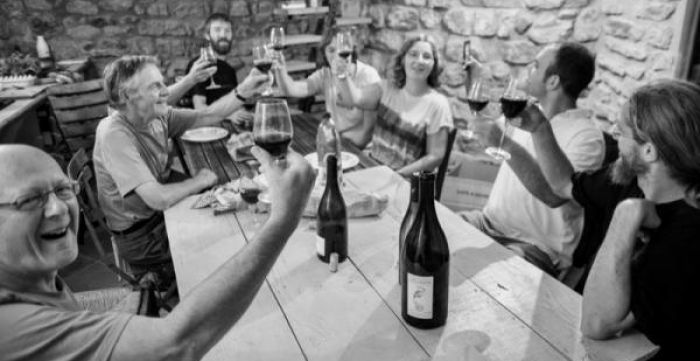2013: the spring that never came, frost in late May, rain and cold during flowering; not a great start to the season! And then a very nice July that caught up about three weeks lost in spring. Followed by August, with its severe and very ususual attack of mildew, stripping us of some of our whites in Brézème and Saint-Julien en Saint-Alban.
This is what we'd faced entering the month of September, still about 15 days late compared to last year. In the end, the Gods decided to be nice. Dry weather, fresh nights and radiant sunlight during the day permitted the grapes to ripen and stay healthy.
The harvest really started on September 23rd in Saint-Julien's old Syrah vines, as we waited for our Viogniers and Chasselas to ripen. The Brézème Syrah followed, still under the sun. The alcoholic potential is reasonable this year (nothing above 13°), and the acidities are magnificent. Not a single rotten grape, to the point where the sorting table ended up serving as a transportation mat! Fermentations kicked off quickly and vigorously, and morale was high.
Next up, we headed back to Brézème for the Roussanne, which weren't looking that great. But we were pleasantly surprised at press, as the grapes were a lot riper than we'd orginally imagined. We then rushed over to the Viognier and Chasselas in Saint-Julien to check on their acidities, but it was too late! They had shot down drastically in just a few days, and this means we won't be producing any "Opale" or "Rouletabulle" this year. A good slap in the face and a serious reminder that we still have much to learn and understand.
Somewhat panicked, we rushed in the remaining whites in Saint-Julien. The old Marsanne from the Hospital parcel were harvested seperately, and there will be a "Domaine Pergaud Saint Julien" white for the first time in 2013. Yields for the whites are globally tiny because of mildew, so there will not be much white in the "Chat Fou" 2013, and just barely half of last year's "Adèle" production.
We then headed to the young Syrahs in Saint-Julien, where maturities were similar to Brézème. It will be very interesting comparing the two in coming months.
We kept the hardest for last with the Grenache. The damage due to coulure was severe. A veteran vigneron from the Rhône valley explained it to me years ago: Grenache doesn't do two things at once. This year it was very vigorous around flowering, which made it very susceptible to coulure. Its abnormal charge of fruit messed with its proper development over the rest of the season. In the end, it will be a low year for Grenache, who produced around 25hl/h in Saint-Julien and 20hl/h in Vaison la Romaine and Châteauneuf du Pape. To add to the challenge, we were constantly checking the skins for ripening, endlessely hopping from one parcel to another. Maturities were very heterogeneous, forcing us to do multiple passes to wrap up the harvest.
After two long weeks, all of the grapes had been picked and our losses were limited to 10 to 15% compared to a normal year. That's nothing compared to a lot of friends in other regions who suffered tremendously this year.
With these extremely ripe grapes, vinifications were off to a nice start, but a few uncooperative vats gave us the chills. All of the malolactic fermentations were finished, but for two vats, the risk of certain bacterias causing a deviation was strong. Spotting this risk a few days into the maceration, we quickly racked these out to chill the juice, letting the yeasts finish their work without those pesky bacteria getting in the way. And lo and behold, the sugars finally finished without any spikes in volatility and without the need to add SO2 or worst, lysozymes.
